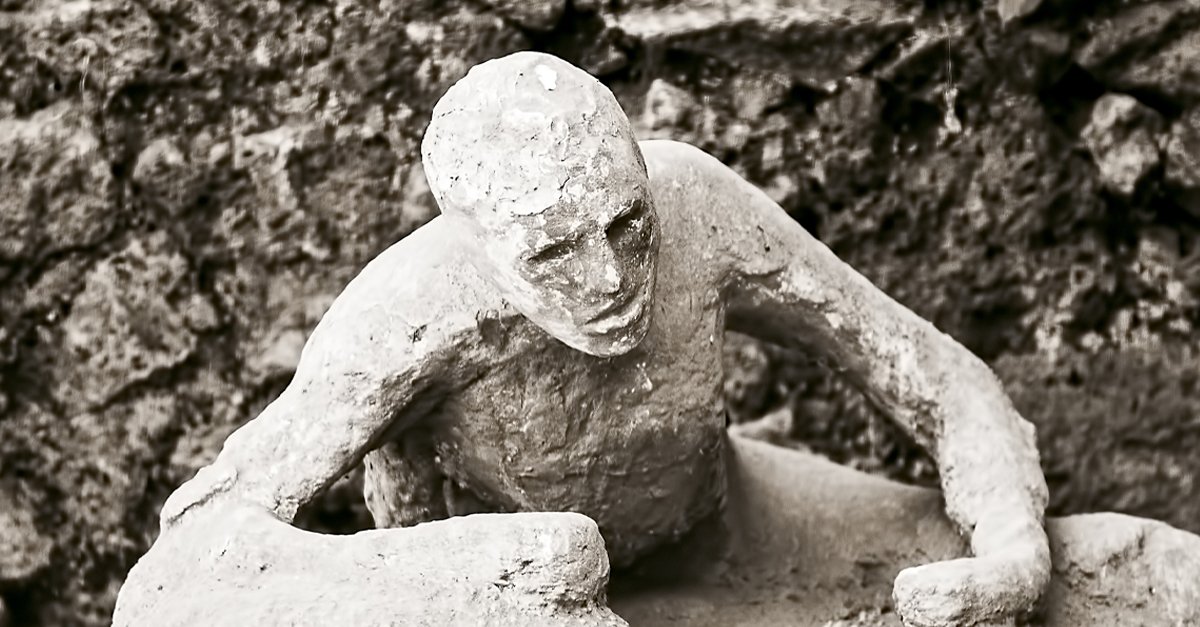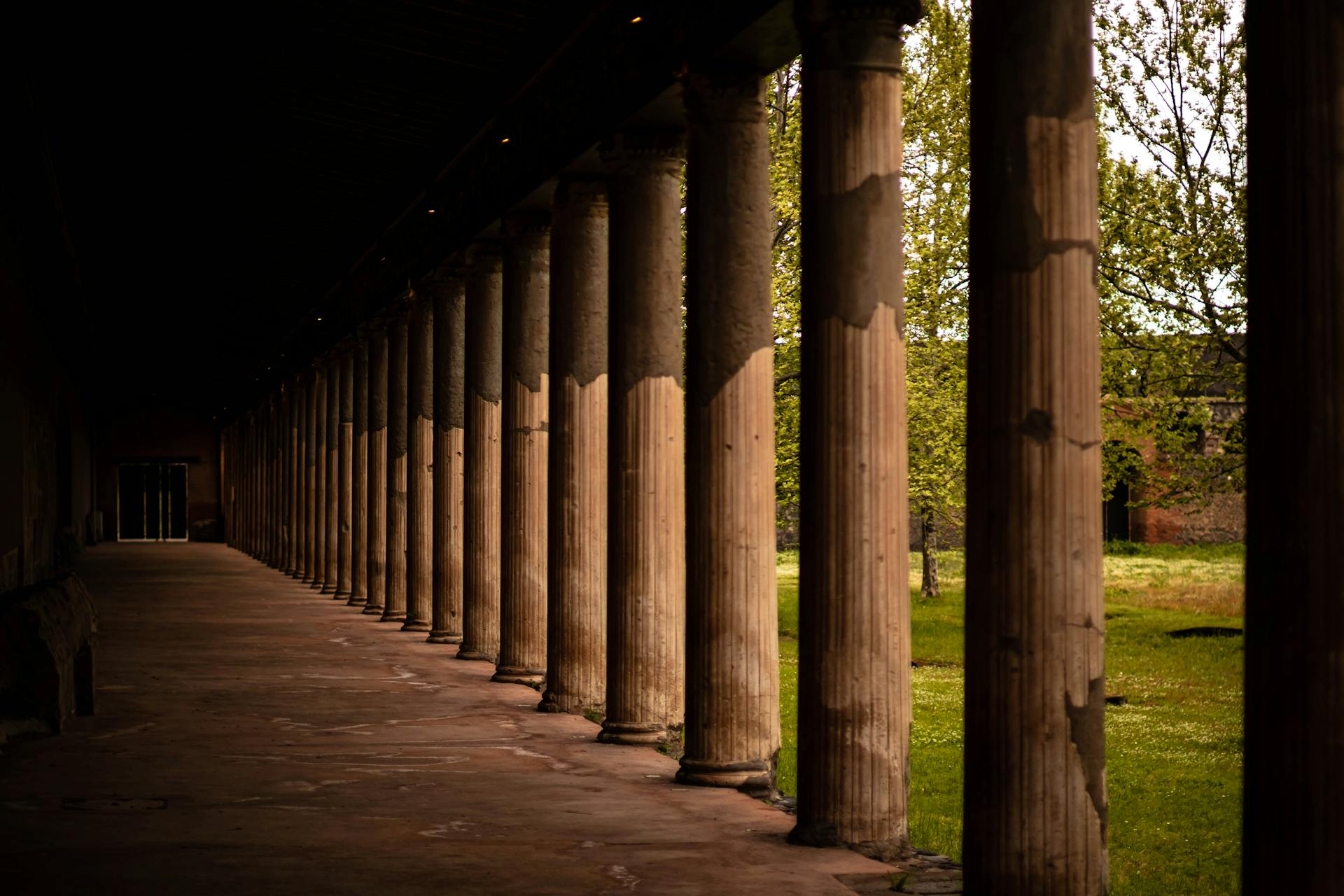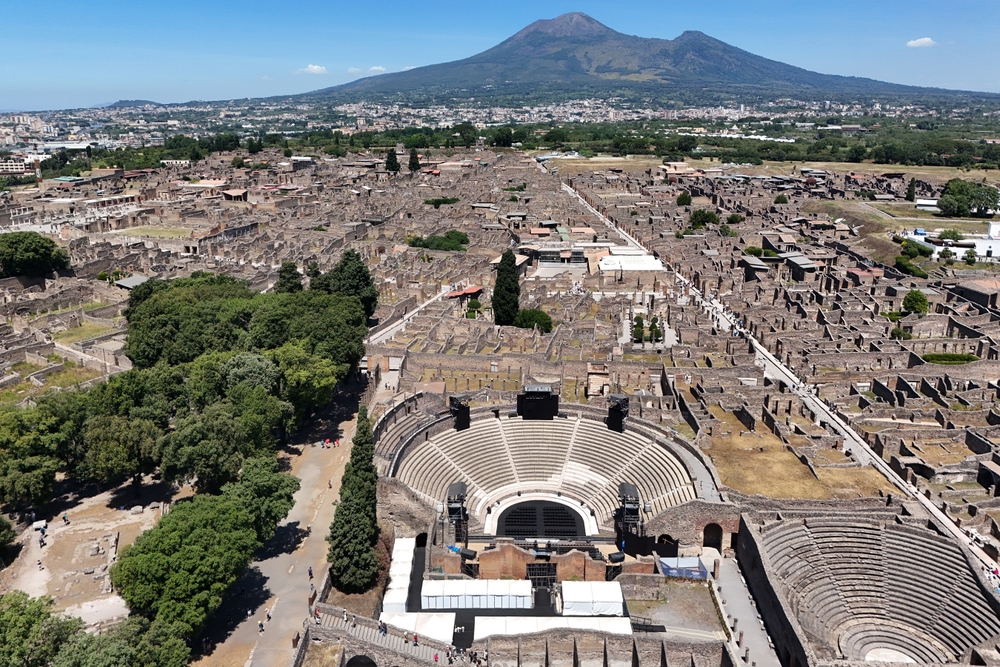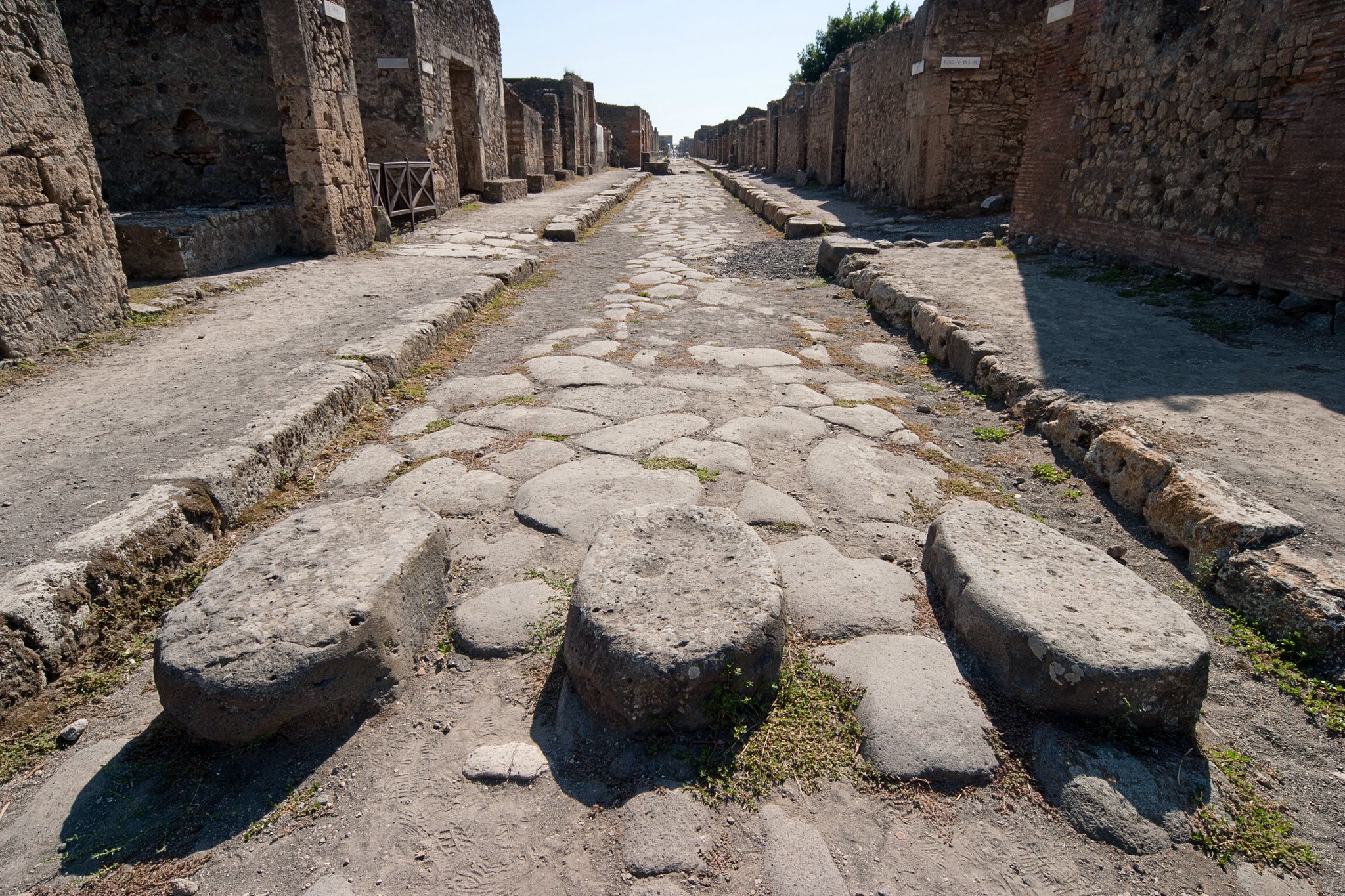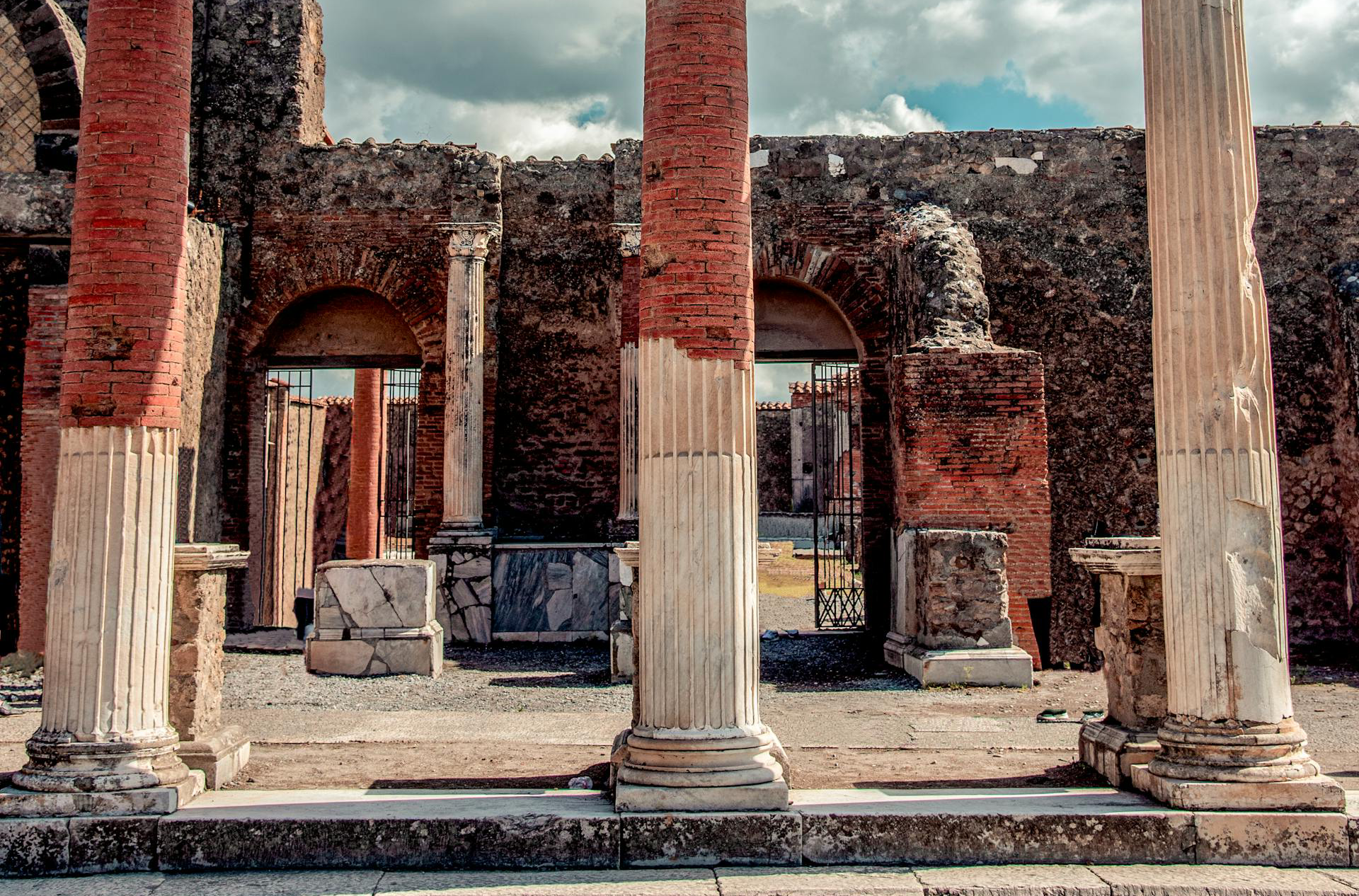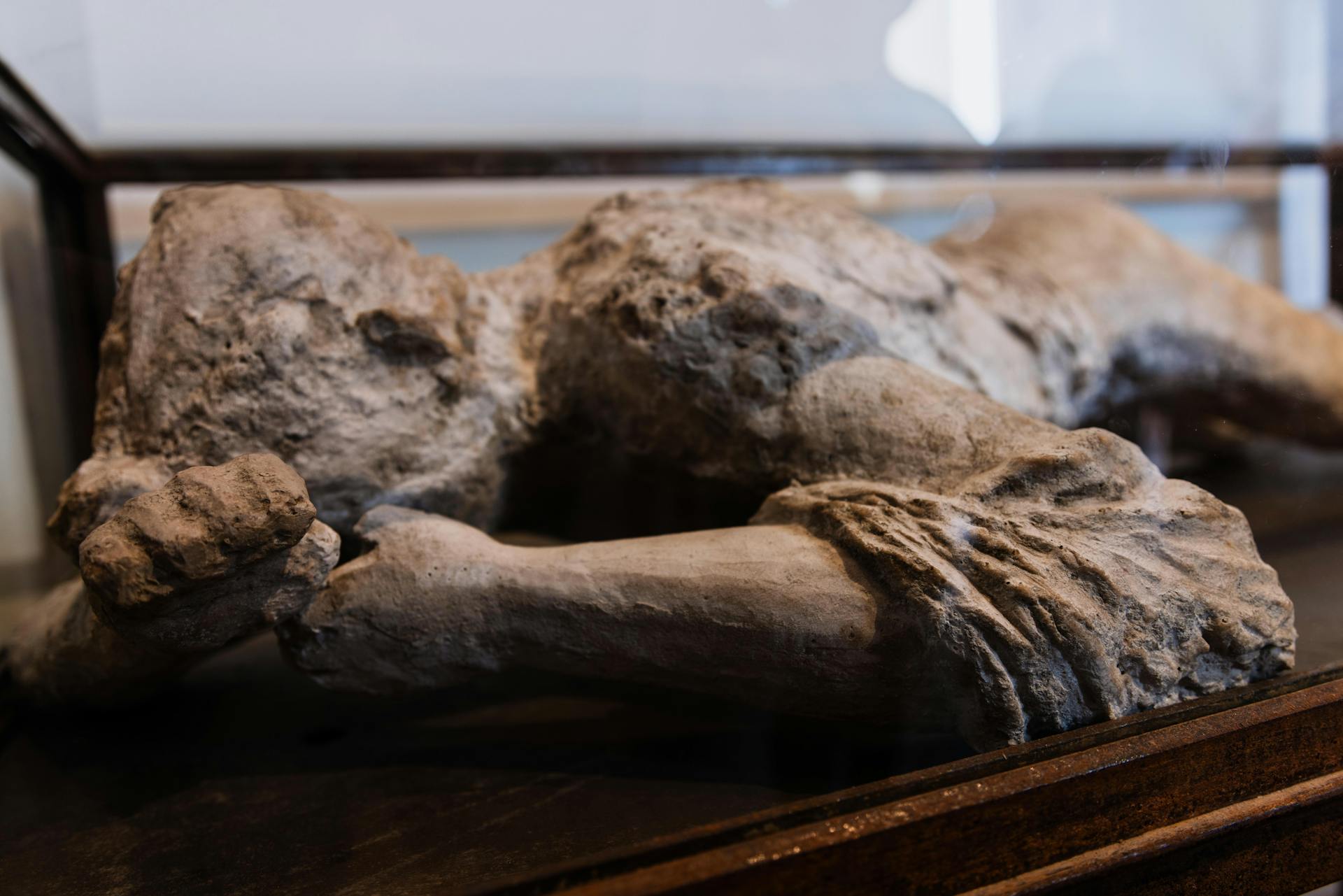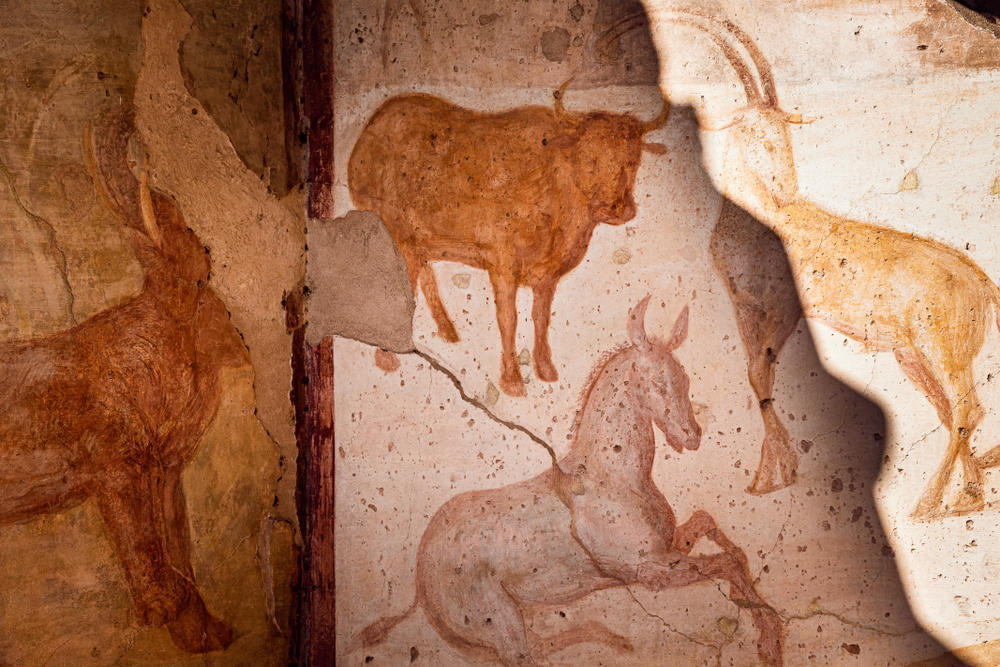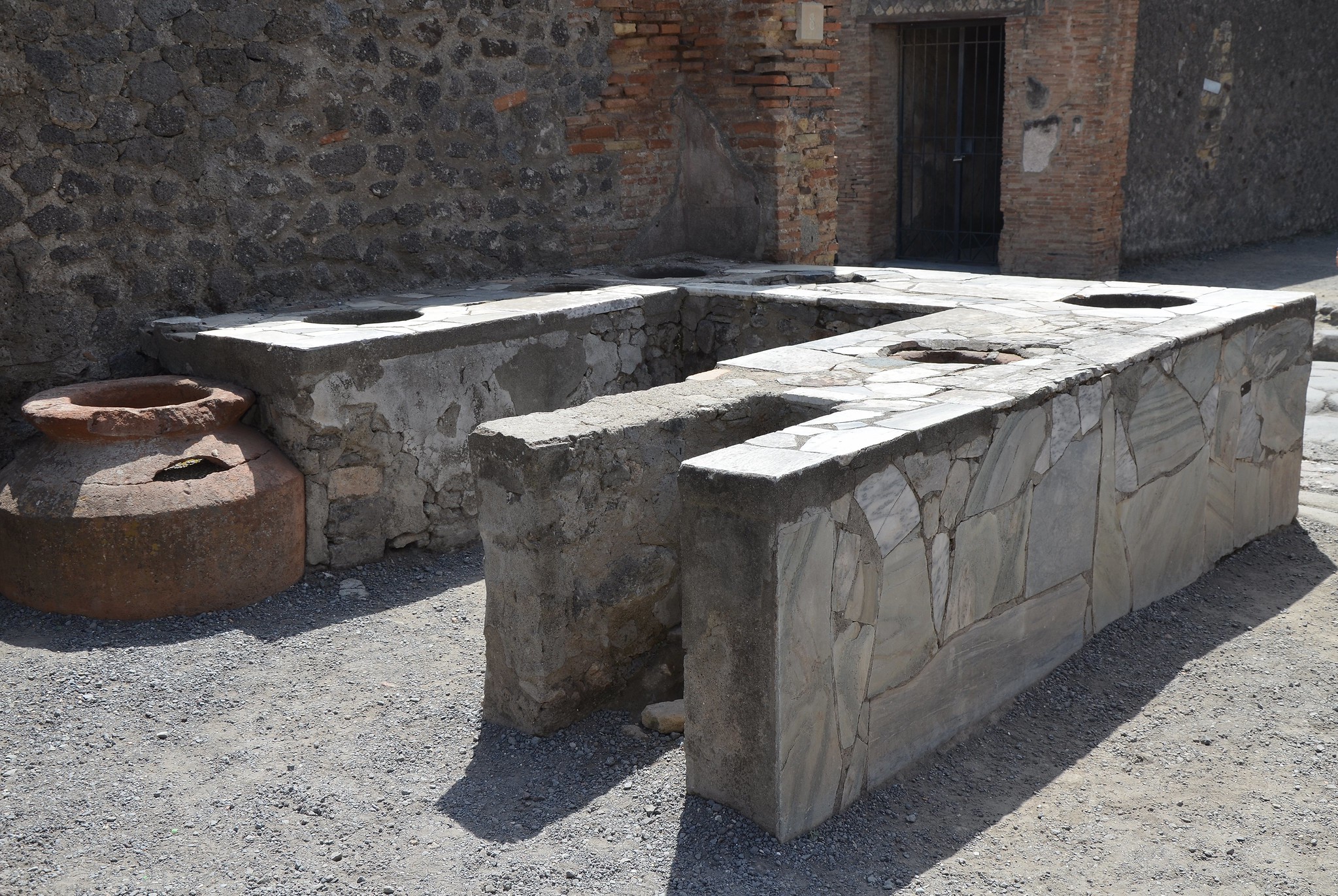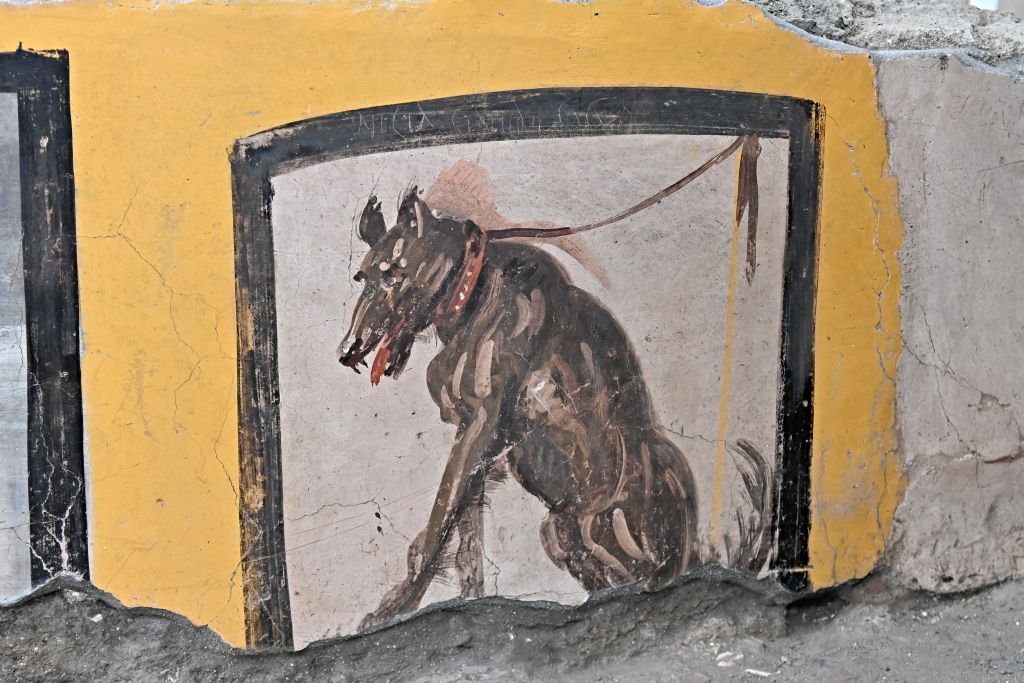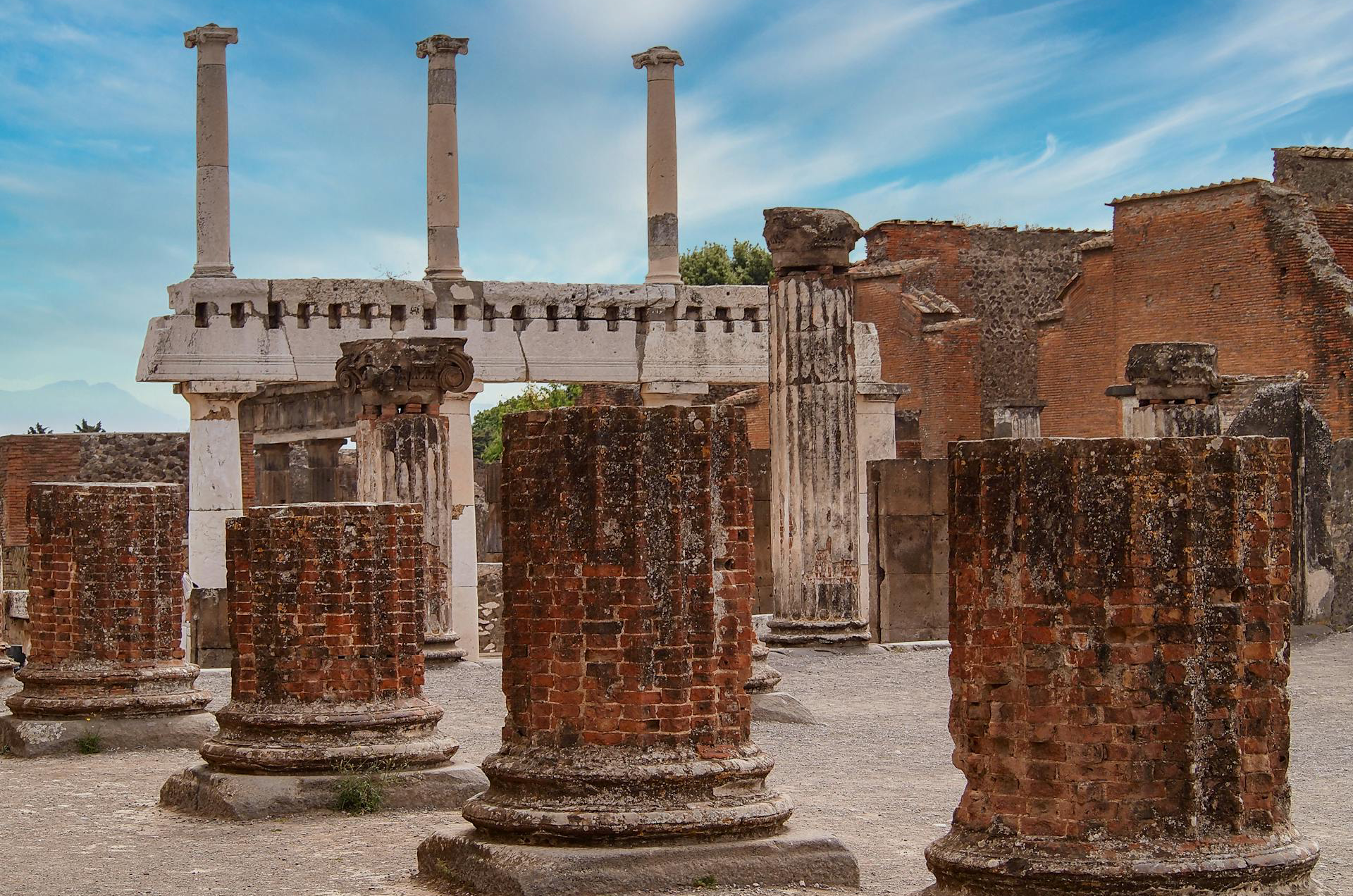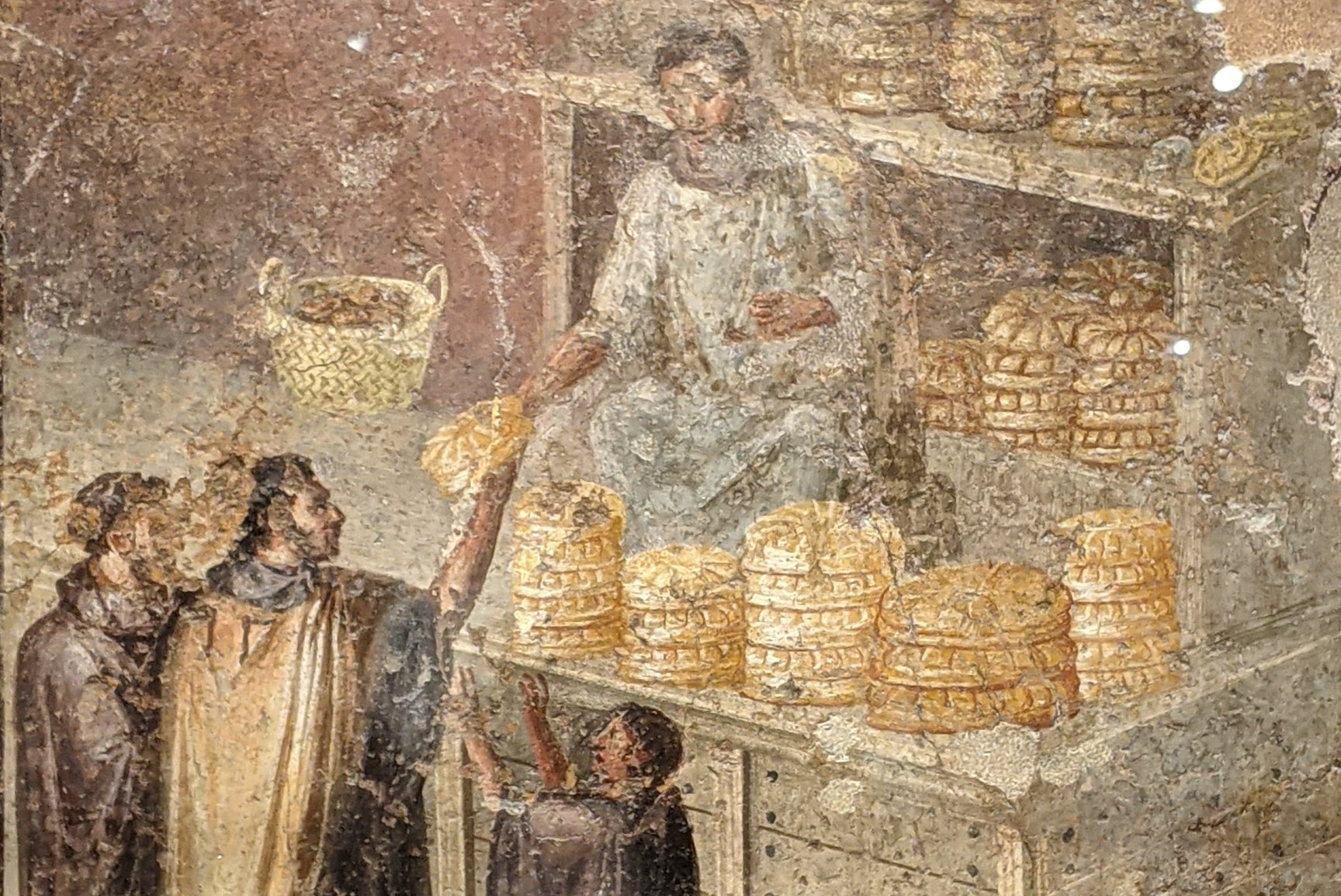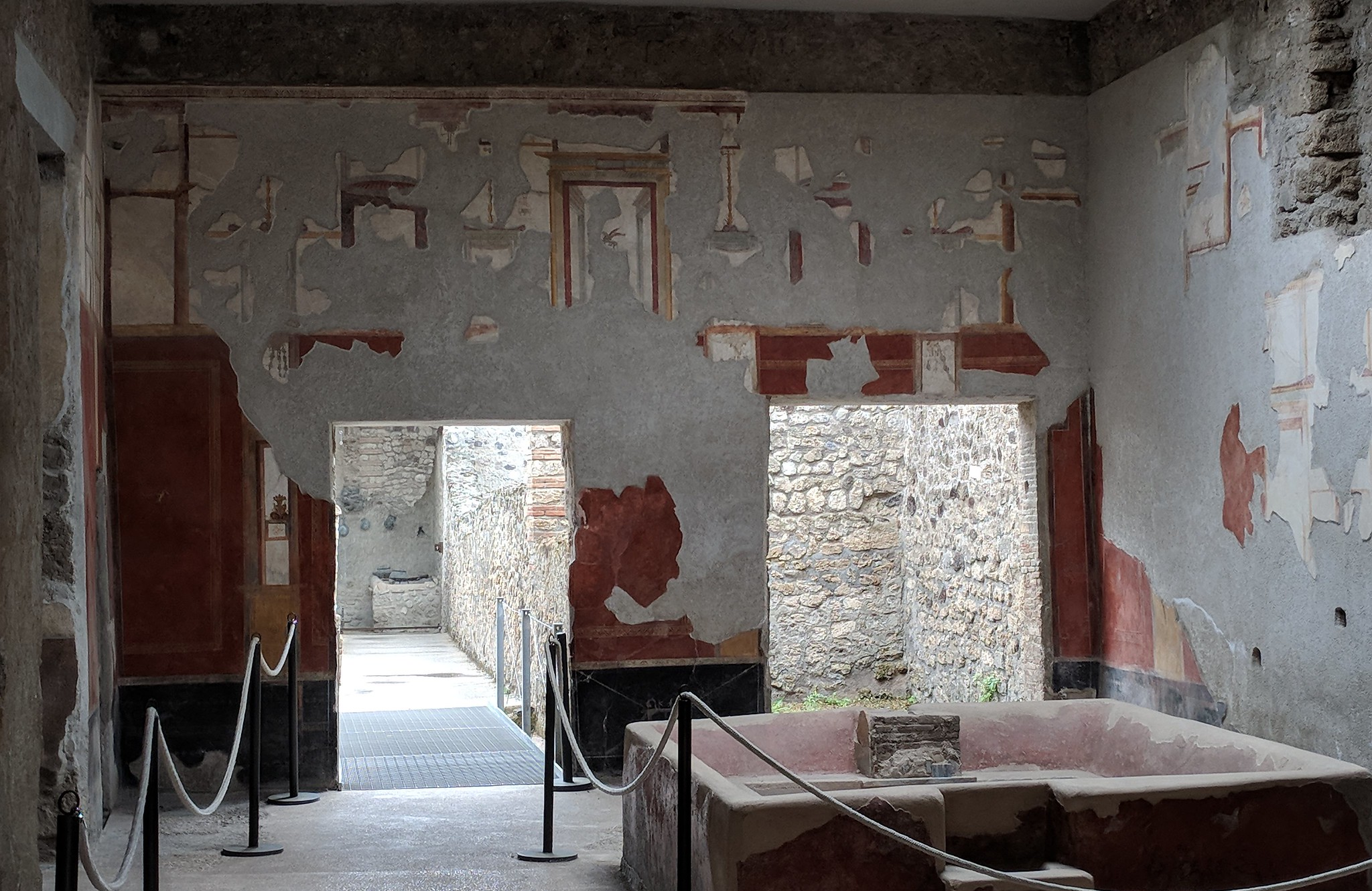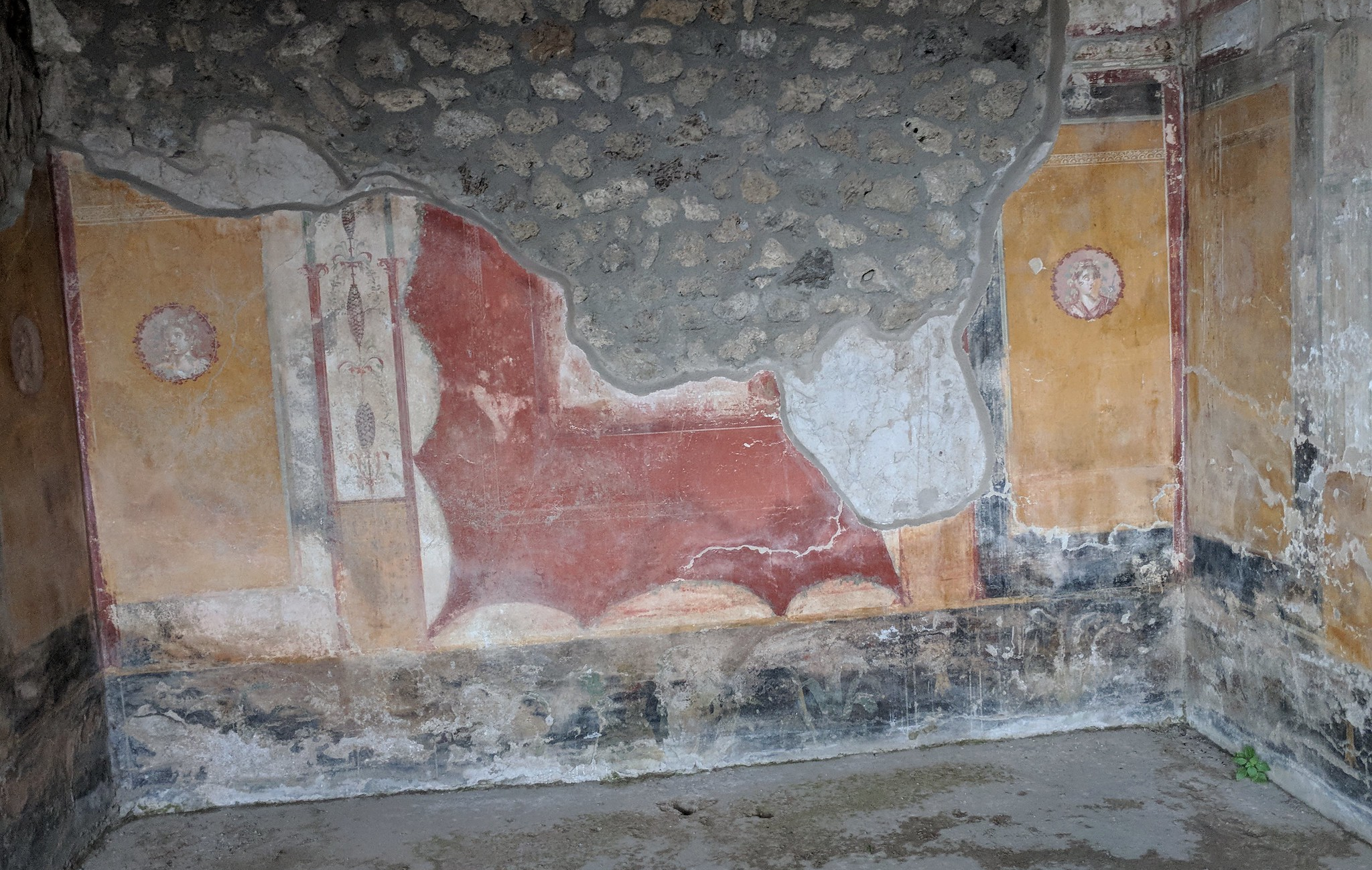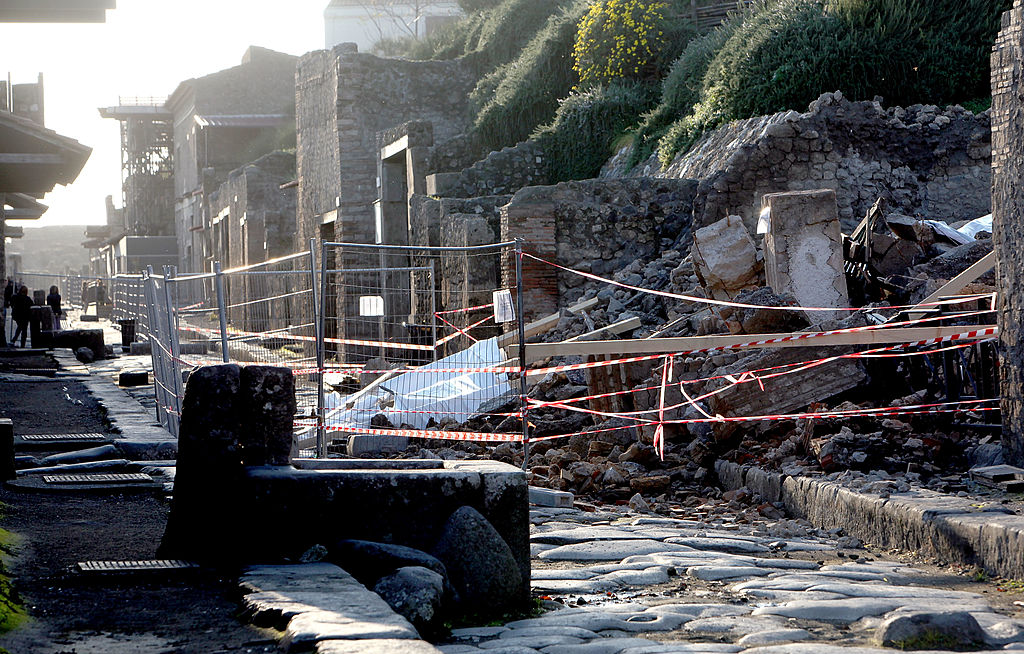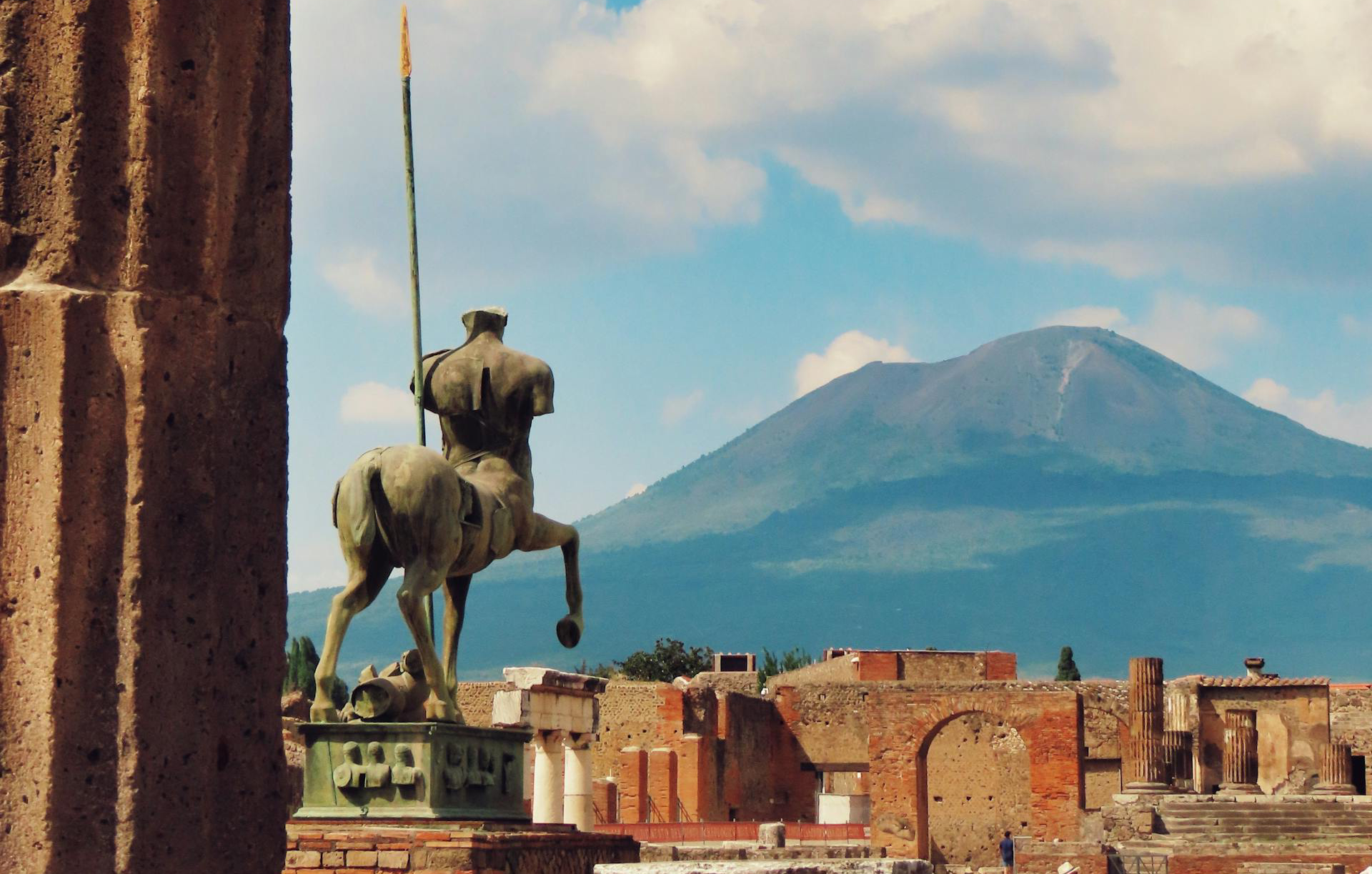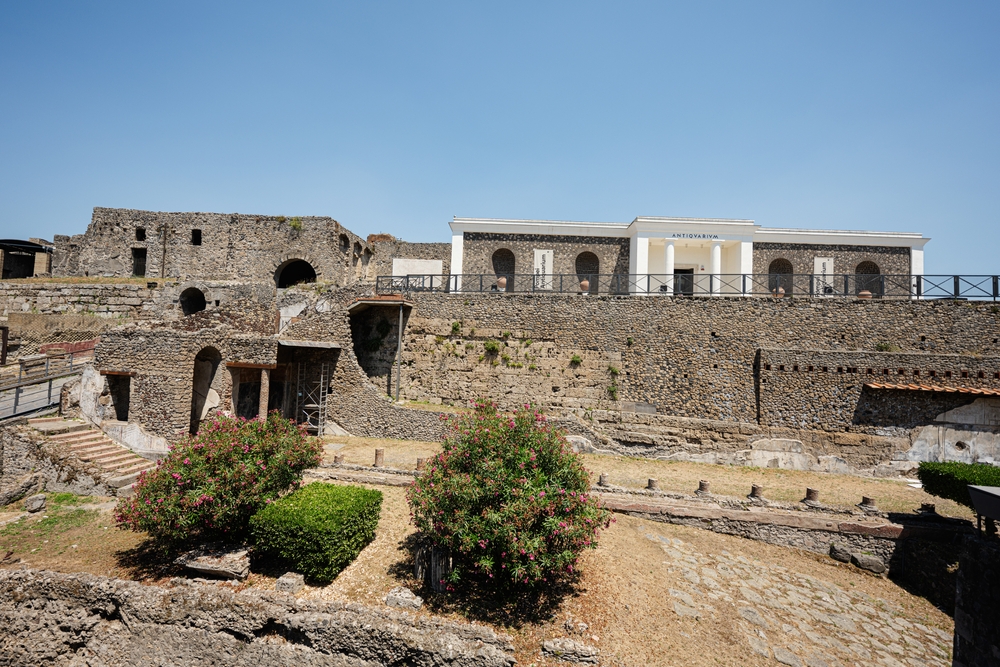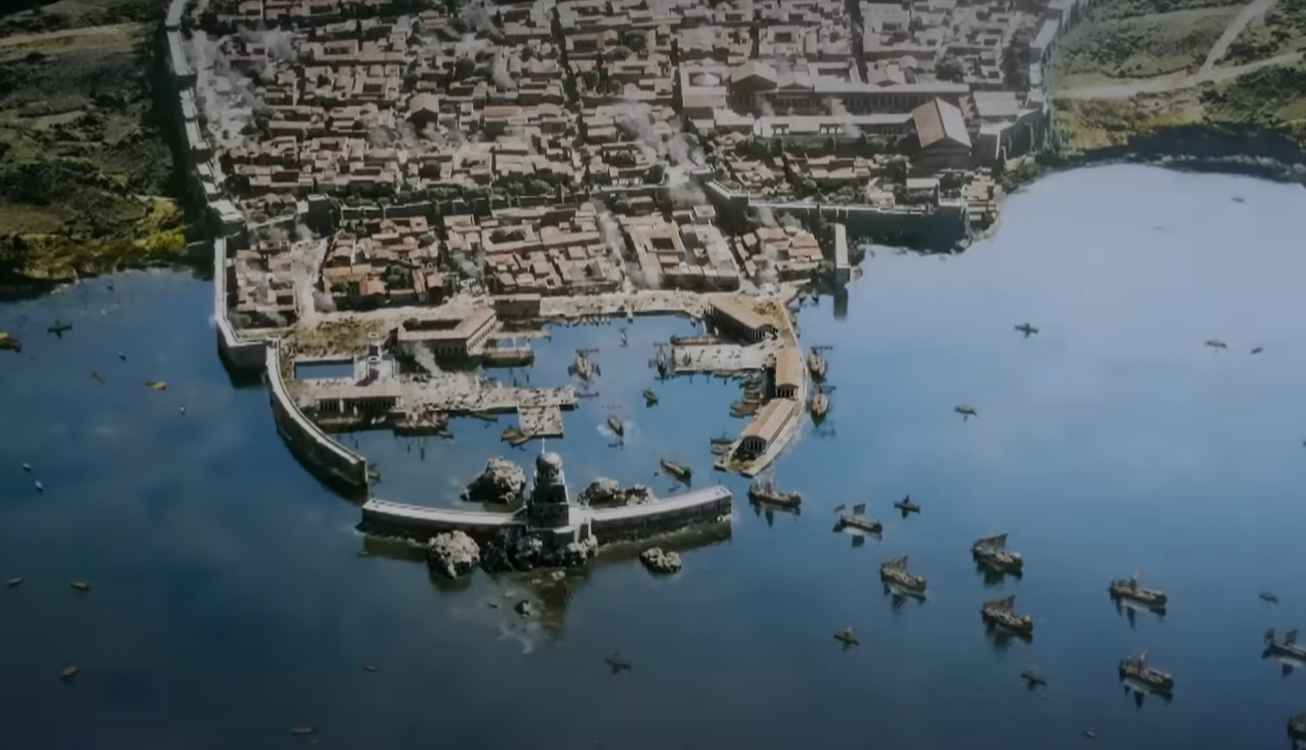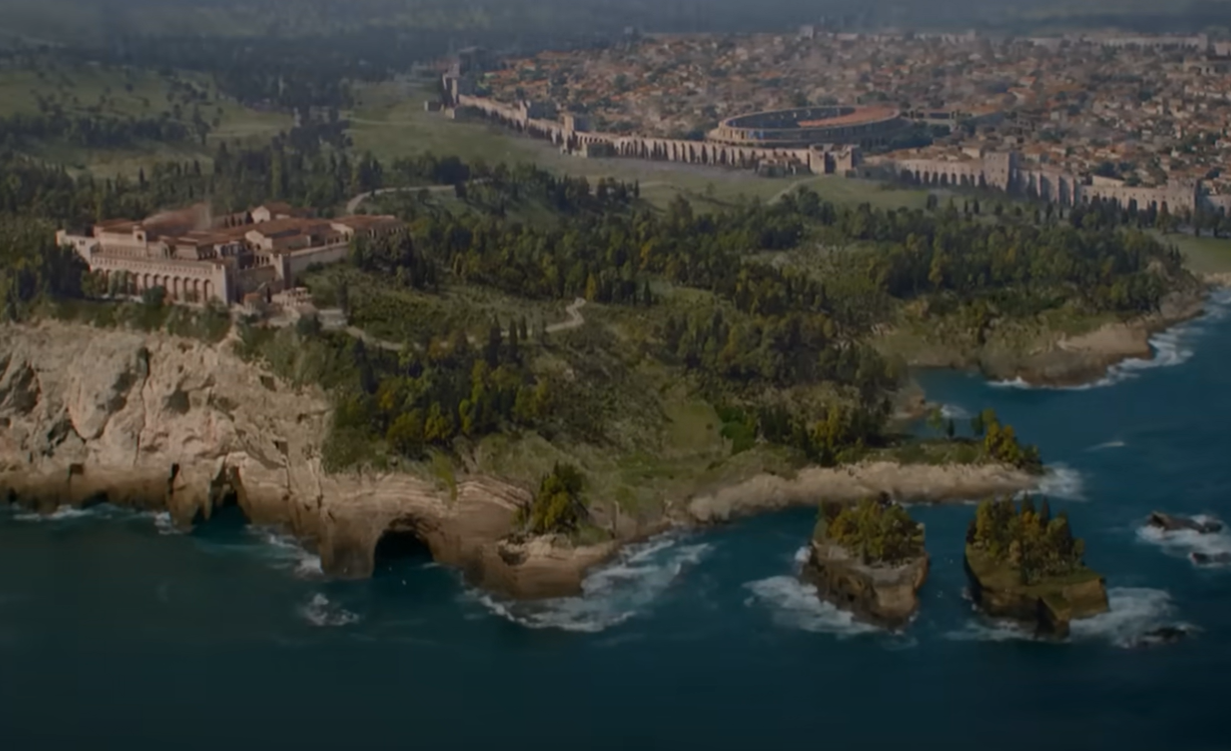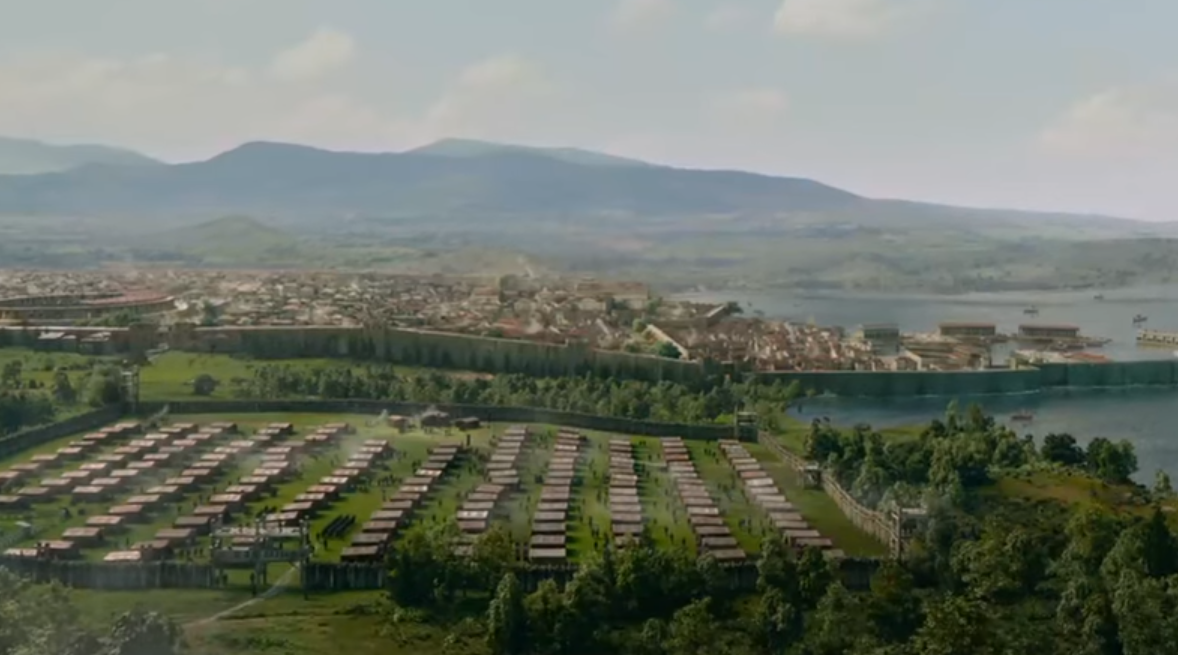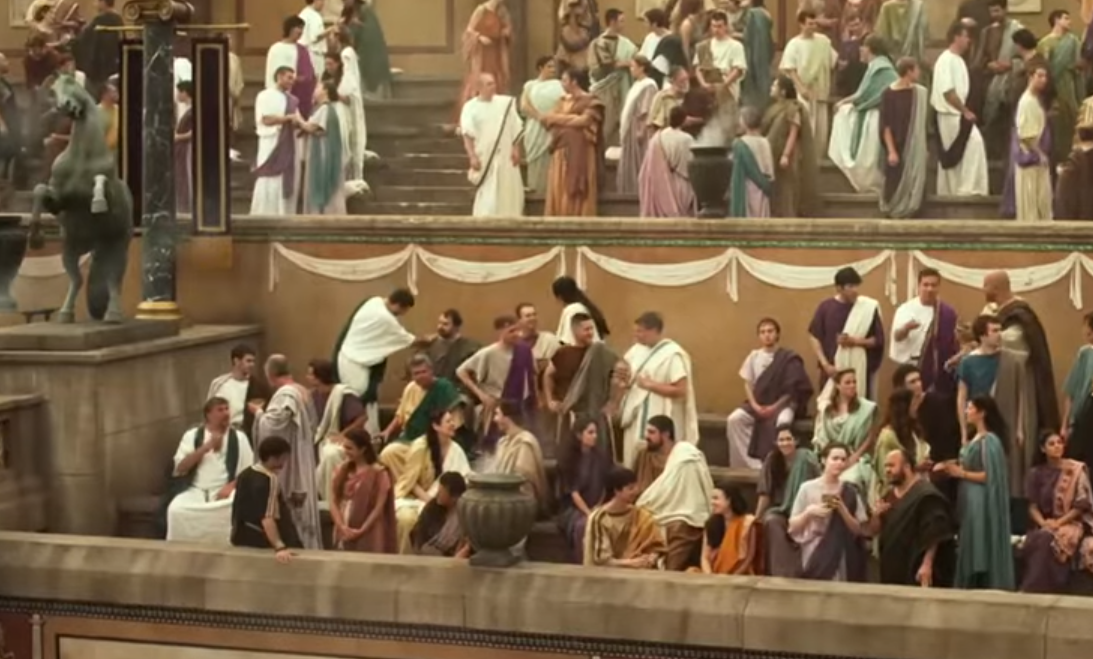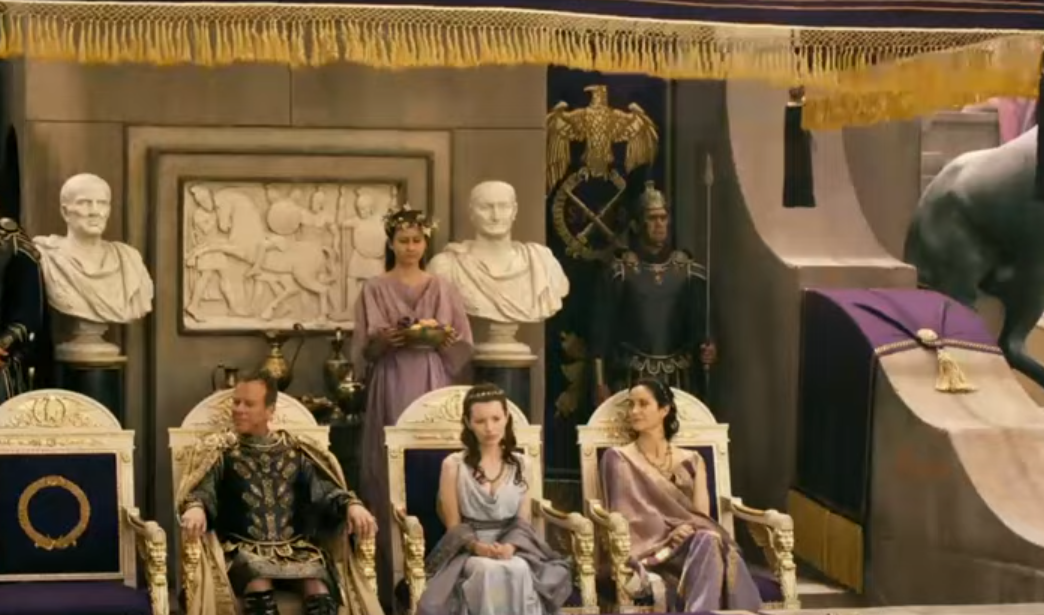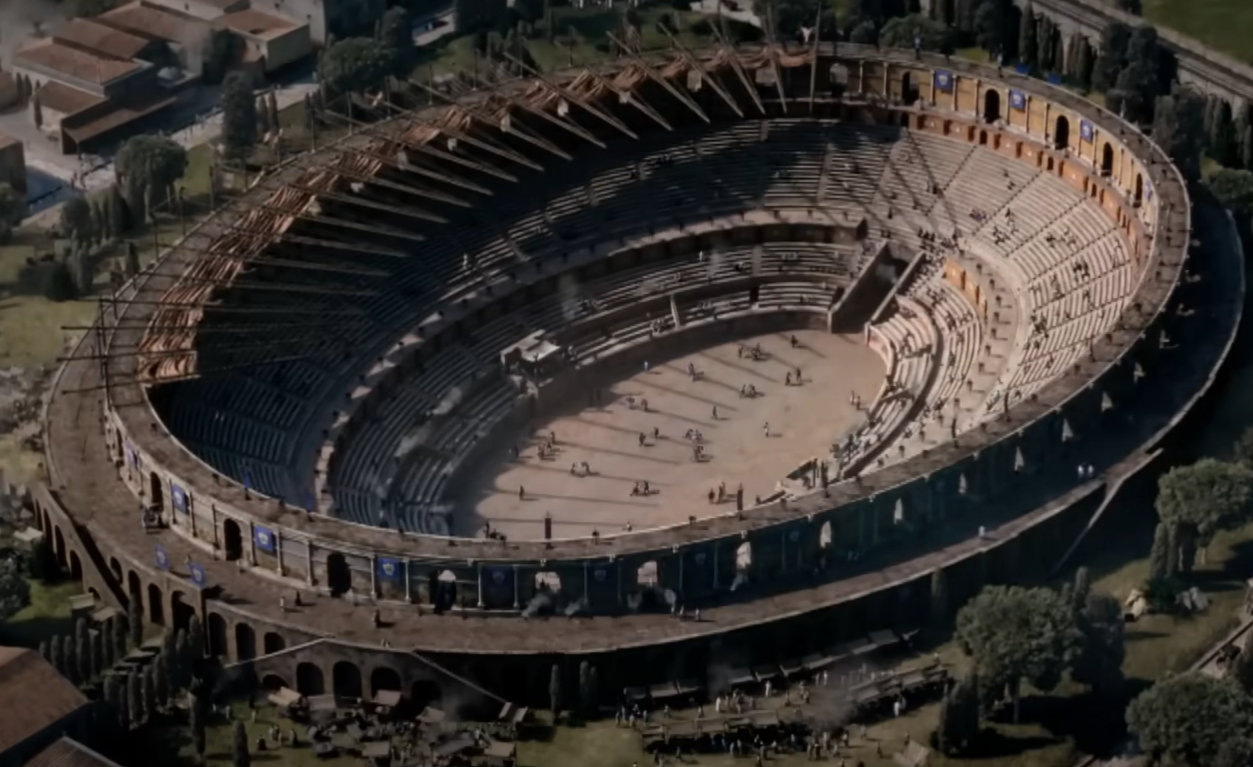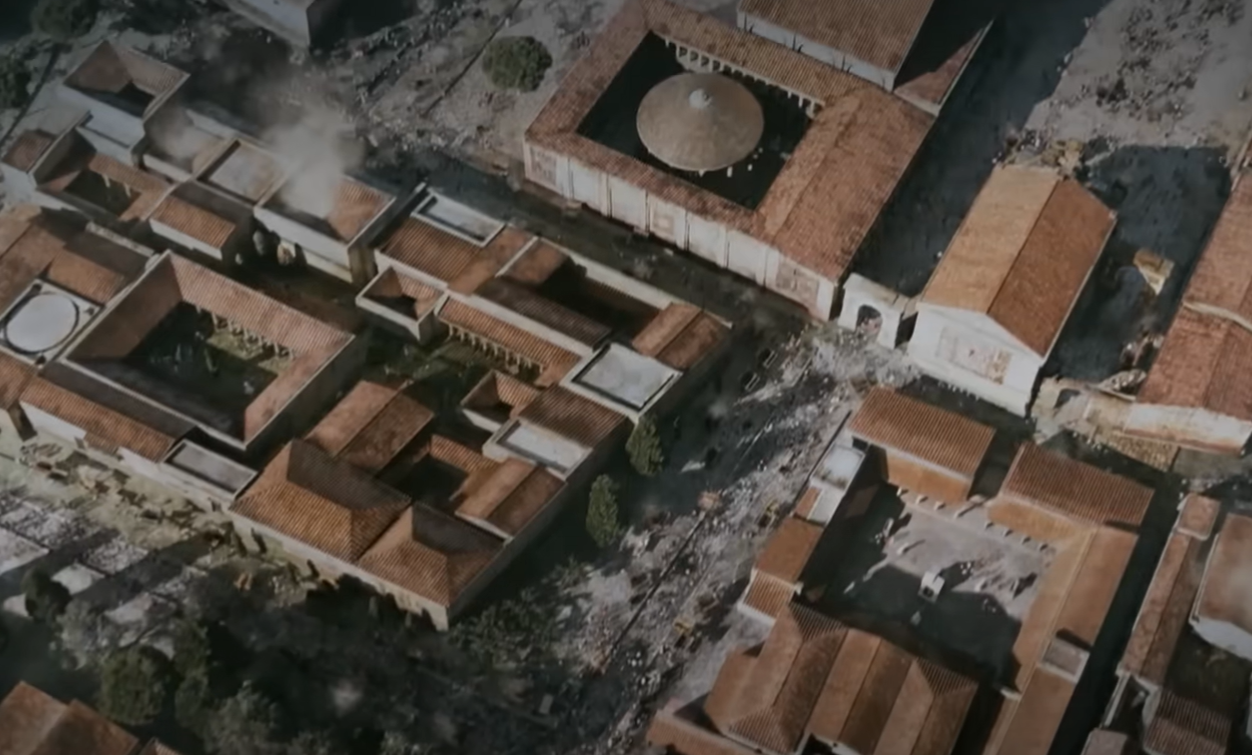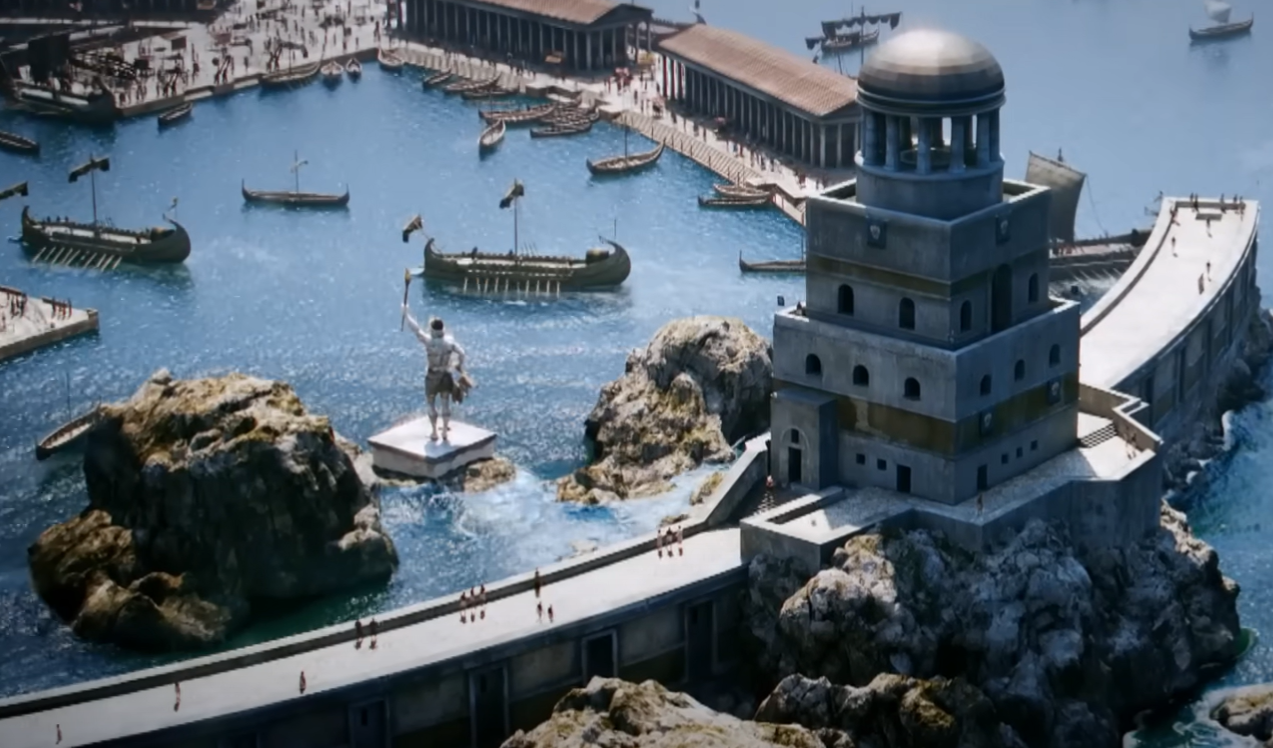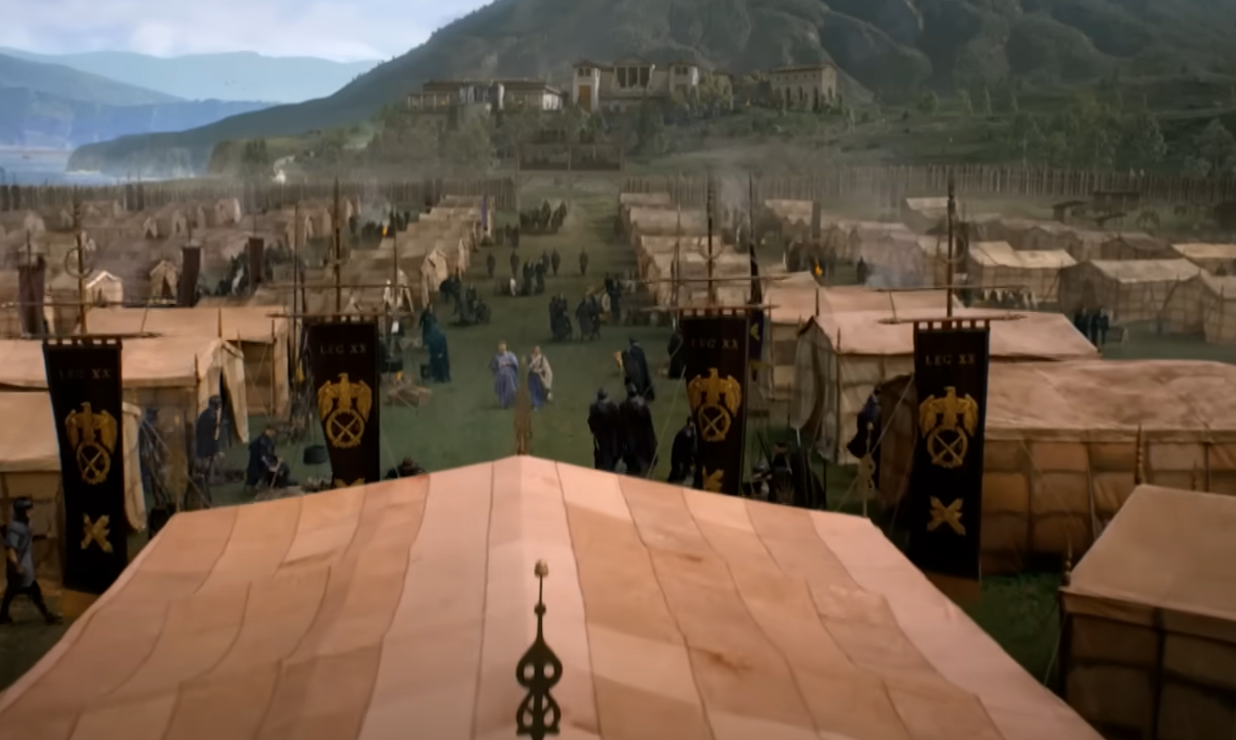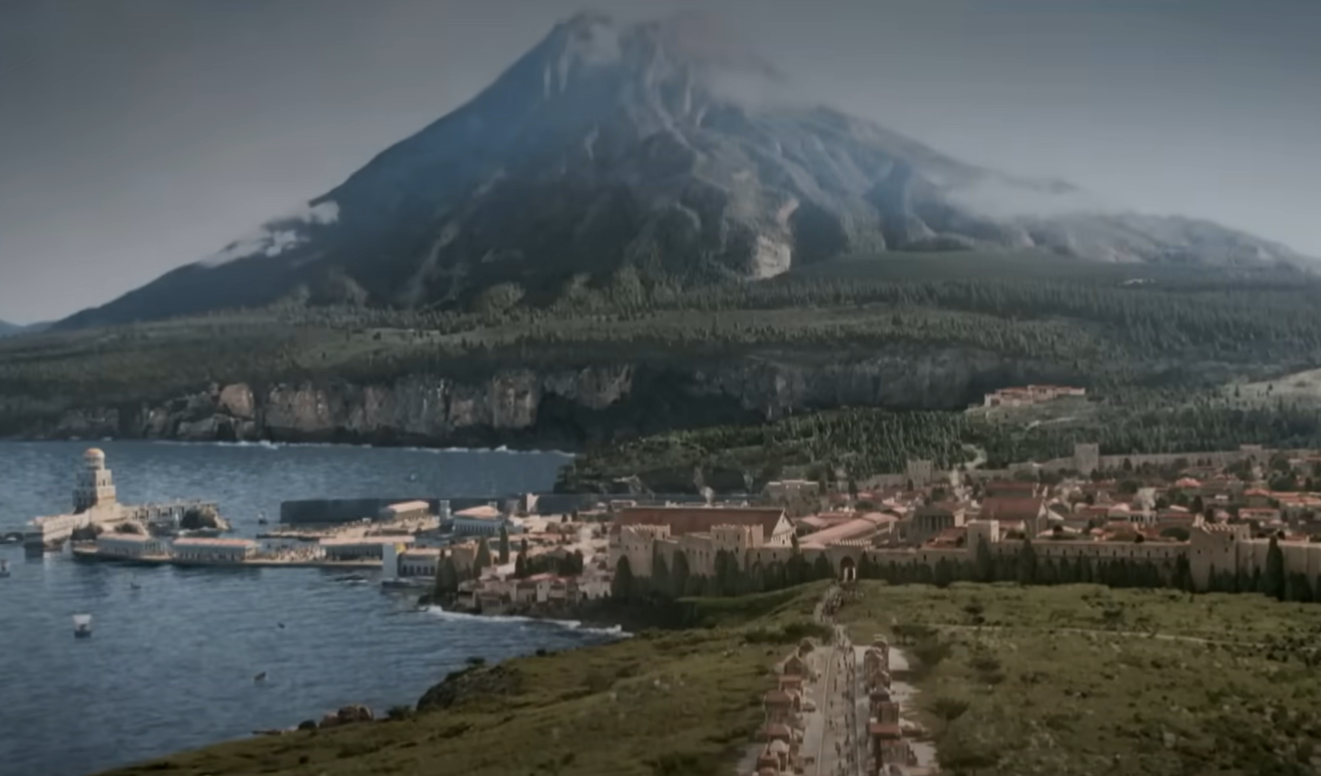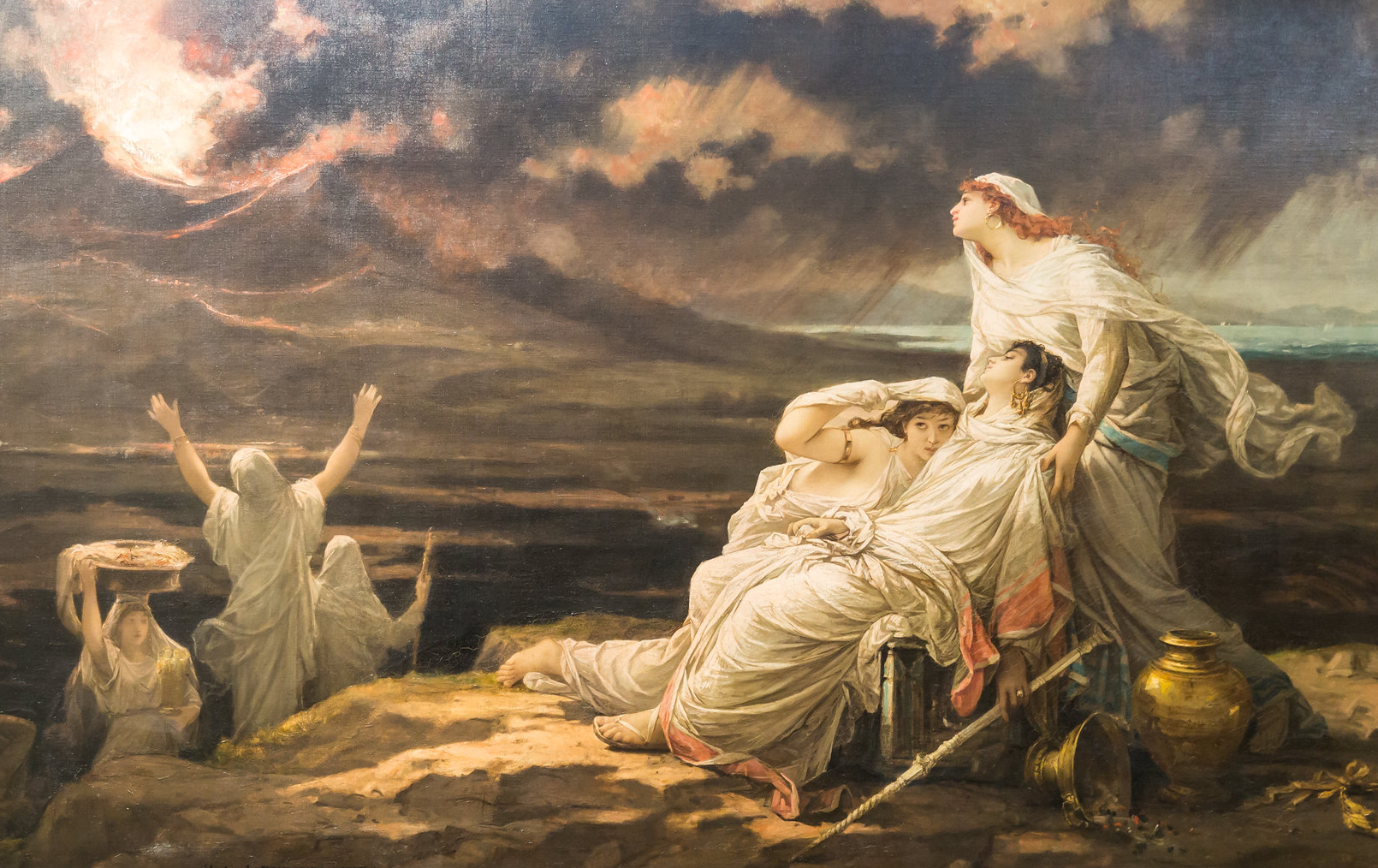The End Of The World
The people who experienced the destruction of Pompeii, the city in the shadow of Mount Vesuvius, must have thought they were seeing the apocalypse: The black sky filled with fire as the earth rocked and a blanket of suffocating ash fell over their once-beautiful city.
Pompeii wouldn't see the sun again again for nearly 2,000 years.
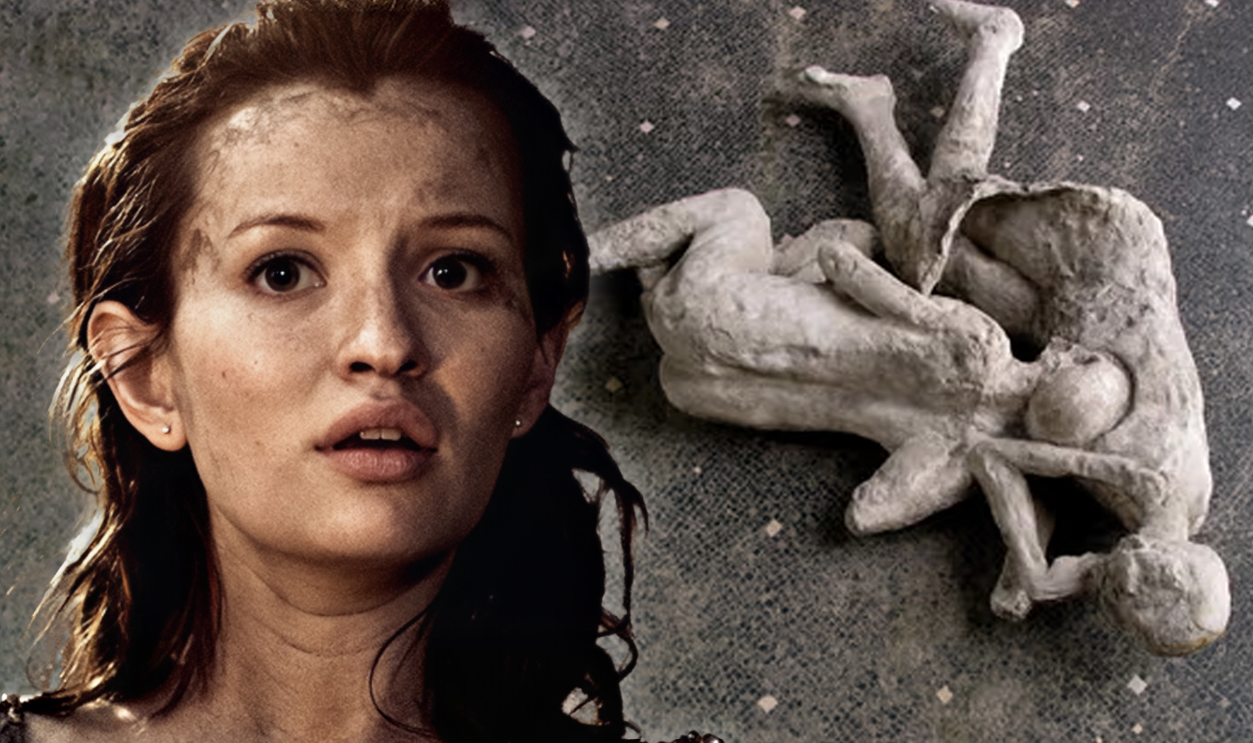
A City Buried In Ash
A cloud of ash covered thousands of Pompeiians where they lay, and history slowly began to forget about Pompeii—until archaeologists uncovered their eerily preserved remains, frozen in time to tell the story of those final, cataclysmic moments.
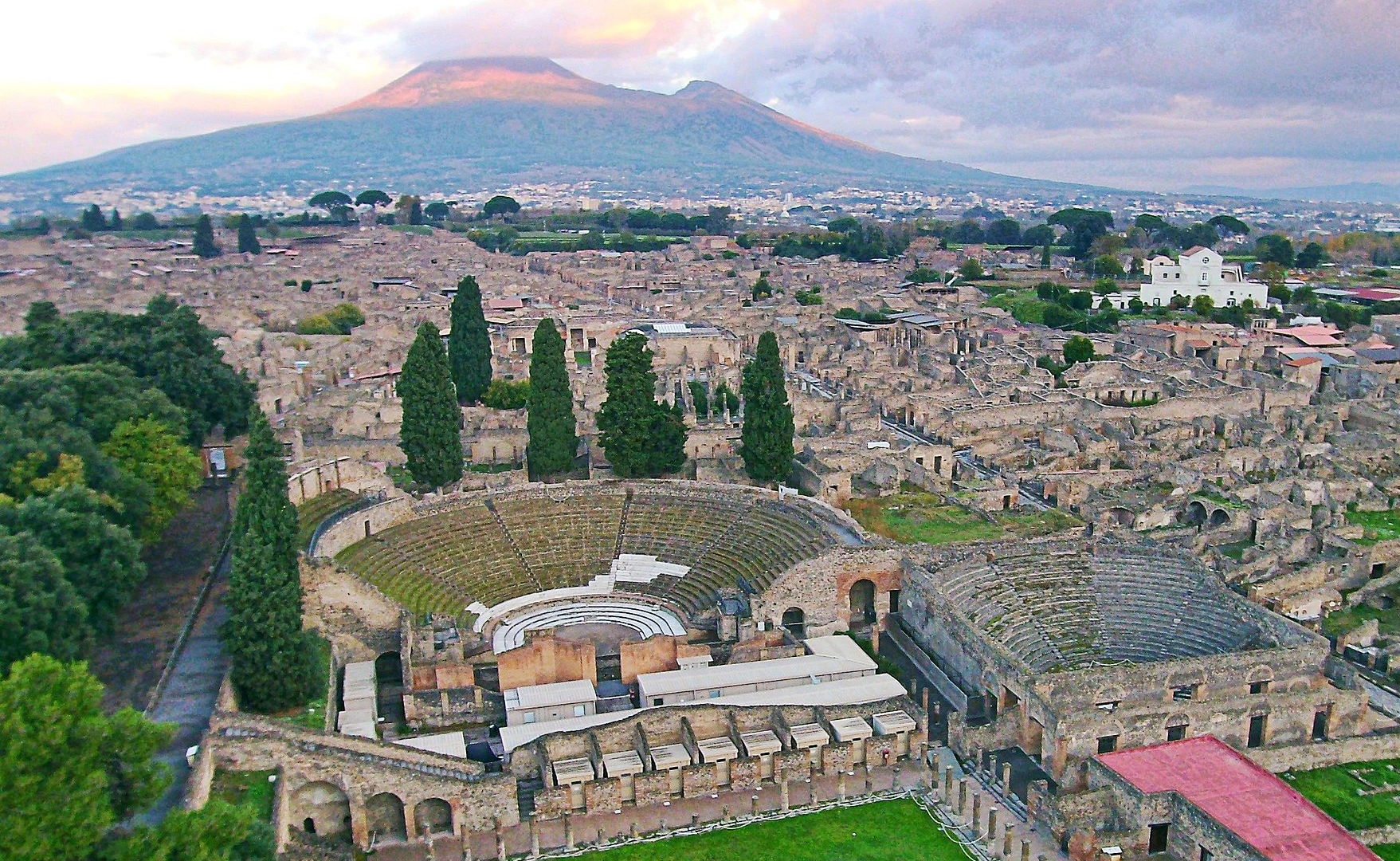 ElfQrin, CC BY-SA 4.0, Wikimedia Commons
ElfQrin, CC BY-SA 4.0, Wikimedia Commons
It Was Forgotten By History
The destruction at Pompeii was so brutal that all attempts at recovery were quickly abandoned, and the once-beautiful city of Pompeii was slowly forgotten by history.
A further series of eruptions in the 4th and 5th centuries buried the ruins even further, and the area faded into legend. But even if they forgot the name, locals knew that something had once sat there under the shadow of Vesuvius.
They Called It "The City"
Locals no longer knew about Pompeii—but there were still the tops of some buildings visible in the shadow of Vesuvius. Locals, who had long since forgotten the name "Pompeii," merely called the eerie site "La Civita," or "The City".
They Kept It Secret
Pompeii wasn't touched again for over a thousand years, until 1592, when an Italian architect discovered buried Roman walls while digging an underground aqueduct. They ended up tunnelling under and through much of the ancient city—but when they were finished, they kept what they had discovered a secret.
So Pompeii remained buried and forgotten—but it wouldn't stay that way forever.
People Discovered Their Neighbors
When Neapolitan workers discovered the remarkably preserved remains of the nearby city of Herculaneum, this prompted the local ruler, King Charles of Bourbon, to order further excavations. It was during these efforts, in 1763, when a worker finally uncovered an inscription from the city: Rei Publicae Pompeianorum.
It was the first time anyone had seen the name "Pompeii" in centuries.
Napoleon Spearheaded Further Excavation
When France conquered Naples under Napoleon, they took great interest in the site at Pompeii. France sent over 700 workers to the site, where they toiled for years. Their excavation uncovered the true scope of the once-luxurious seaside city for the first time.
 Jacques-Louis David, Wikimedia Commons
Jacques-Louis David, Wikimedia Commons
They Made A Chilling Discovery
As workers began digging down into the site, they began to notice strange concavities in the ash that buried the town. They soon realized what they were dealing with: These were the places that the citizens of Pompeii had been buried where they lay. Their bodies eventually decomposed, leaving a pile of bones and a void where they had been.
In the 19th century, these concavities gave one Italian archaeologist a brilliant idea.
They Made Haunting Casts
Italian Giuseppe Fiorelli took over the site in 1863, and it was his idea to inject plaster into the voids left by the people of Pompeii. The result was a haunting glimpse back nearly 2,000 years to the day that Vesuvius buried the city.
Fiorelli's technique is still used in similar excavations to this day, though now a more durable resin is used.
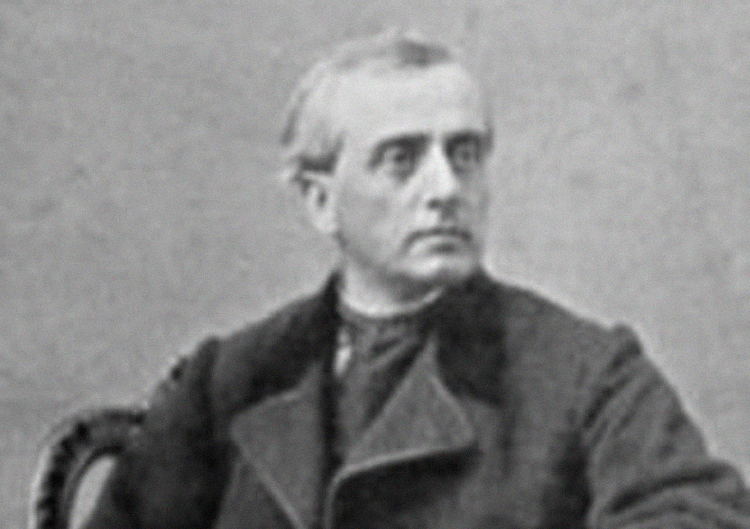 Unknown Author, Wikimedia Commons
Unknown Author, Wikimedia Commons

History's most fascinating stories and darkest secrets, delivered to your inbox daily.
They Didn't Do A Great Jobs
Modern archaeologists would cringe at the way these early excavations were carried out. People were more interested in uncovering as many spectacular villas and mosaics as possible—preservation and scientific study were not particularly high on the list.
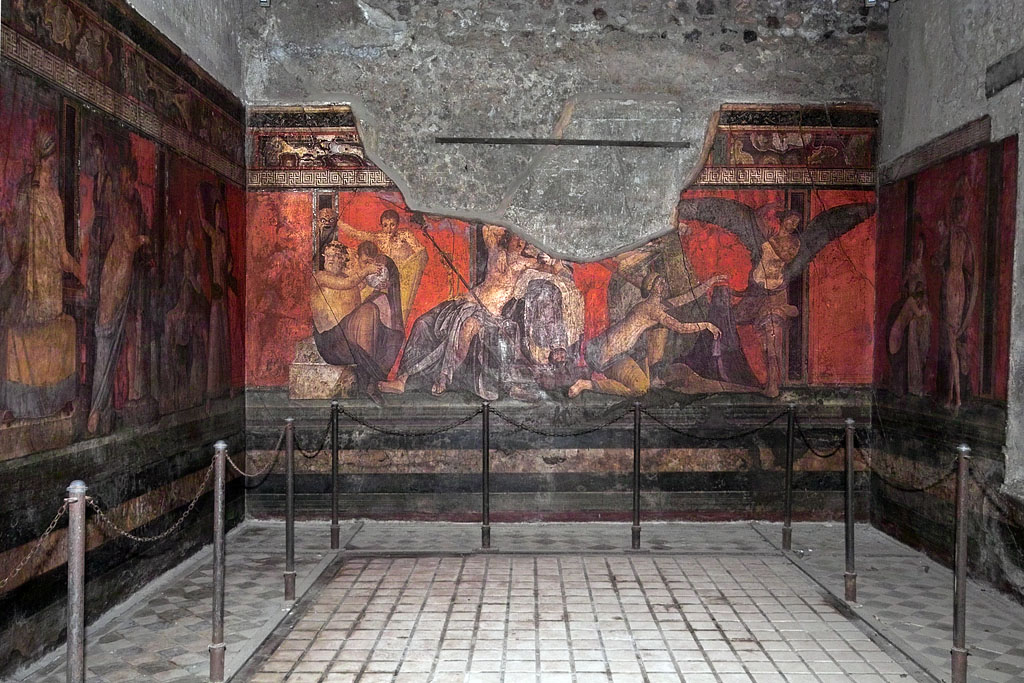 gisleh, CC BY-SA 2.0, Wikimedia Commons
gisleh, CC BY-SA 2.0, Wikimedia Commons
They Uncovered Something Scandalous
Many of Pompeii's buildings were decorated with vibrant frescoes. These have amazed everyone who's been to the site—but early excavators were in for a shocking surprise.
The Romans loved their art, and some of it was QUITE salacious.
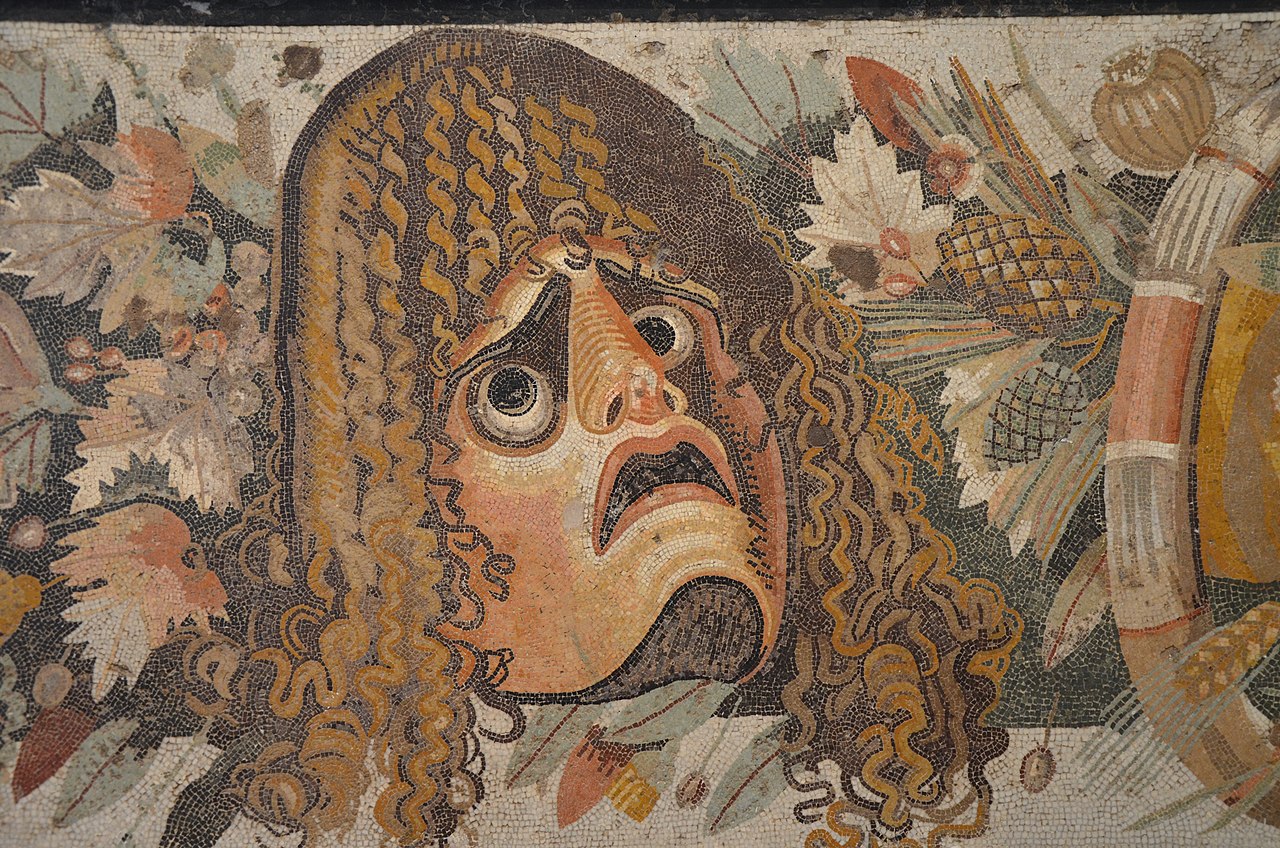 Carole Raddato, CC BY-SA 2.0, Wikimedia Commons
Carole Raddato, CC BY-SA 2.0, Wikimedia Commons
They Loved Erotic Art
The erotic nature of much of the art at Pompeii (google Priapus if you don't believe it, but don't blame me for what you see) shocked early excavators.
Some scenes were actively hidden for centuries because they were too scandalous—and because Counter-Reformation Europeans could not reckon with the fact that the Romans, whom they idolized, were a bunch of dang freaks.
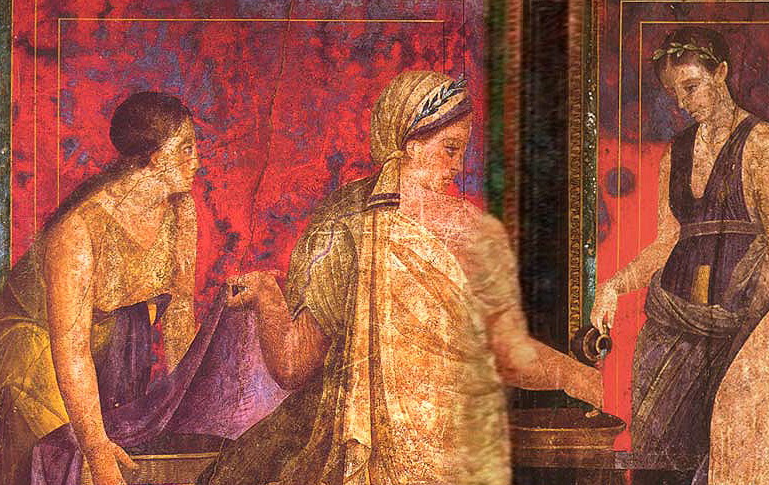 WolfgangRieger, Wikimedia Commons
WolfgangRieger, Wikimedia Commons
The Villa Of The Mysteries
The palatial "Villa of the Mysteries" is one of the best preserved sites from Pompeii. On the outskirts of the city, it avoided major damage from pyroclastic flows, and was merely buried under a mountain of pumice and ash. It was first uncovered in 1909, and archaeologists are still making new discoveries at the site even today.
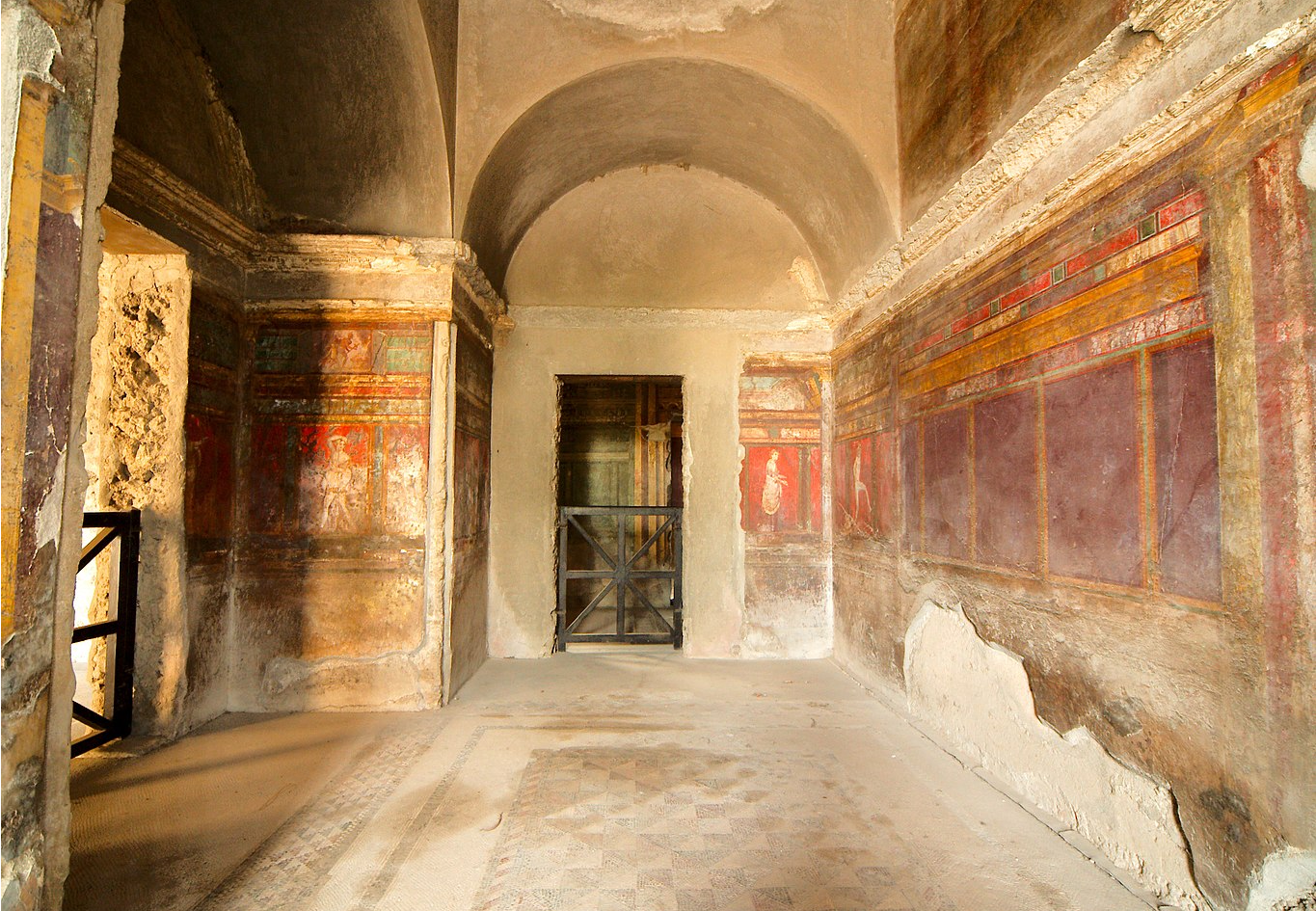 MatthiasKabel, CC BY-SA 3.0, Wikimedia Commons
MatthiasKabel, CC BY-SA 3.0, Wikimedia Commons
They Found Horses
Looters attempted to tunnel into the Villa of the Mysteries' stable in 2017, which prompted a renewed excavation at the site. There, researchers discovered the eerily preserved remains of horses, with their harnesses still on.
It Was Luxurious
The Villa of the Mysteries provides a remarkably preserved look at what the Roman elite lived like—and they lived well. The compound featured its own vineyard, and the walls were decorated with vibrant frescoes, beautifully preserved by the ash.
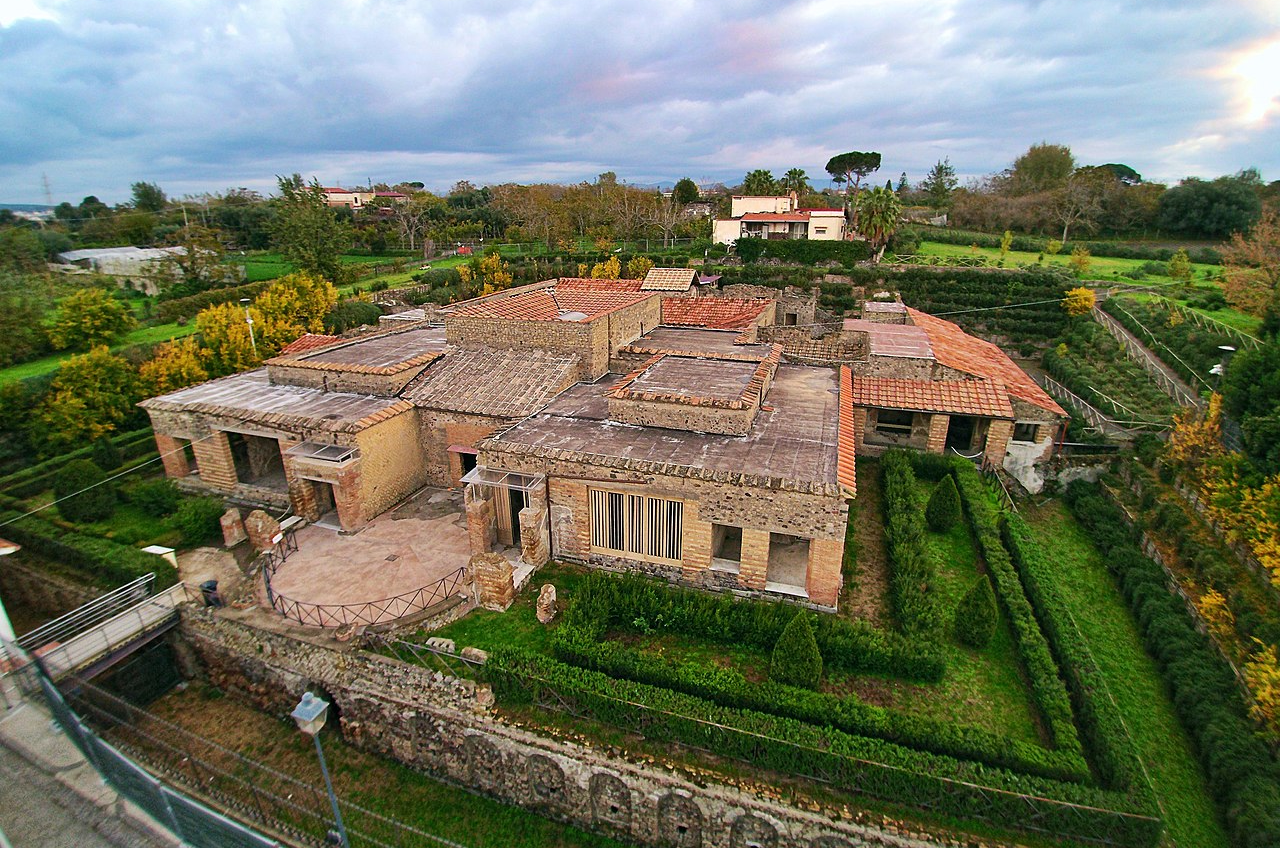 ElfQrin, CC BY-SA 4.0, Wikimedia Commons
ElfQrin, CC BY-SA 4.0, Wikimedia Commons
They Had Nice Restaurants
2020 saw the excavation of a Pompeiian thermopolium—an inn or a restaurant. The walls were decorated with frescoes depicting the food you could buy there, like an Ancient Roman version of putting pictures of the food on the menu.
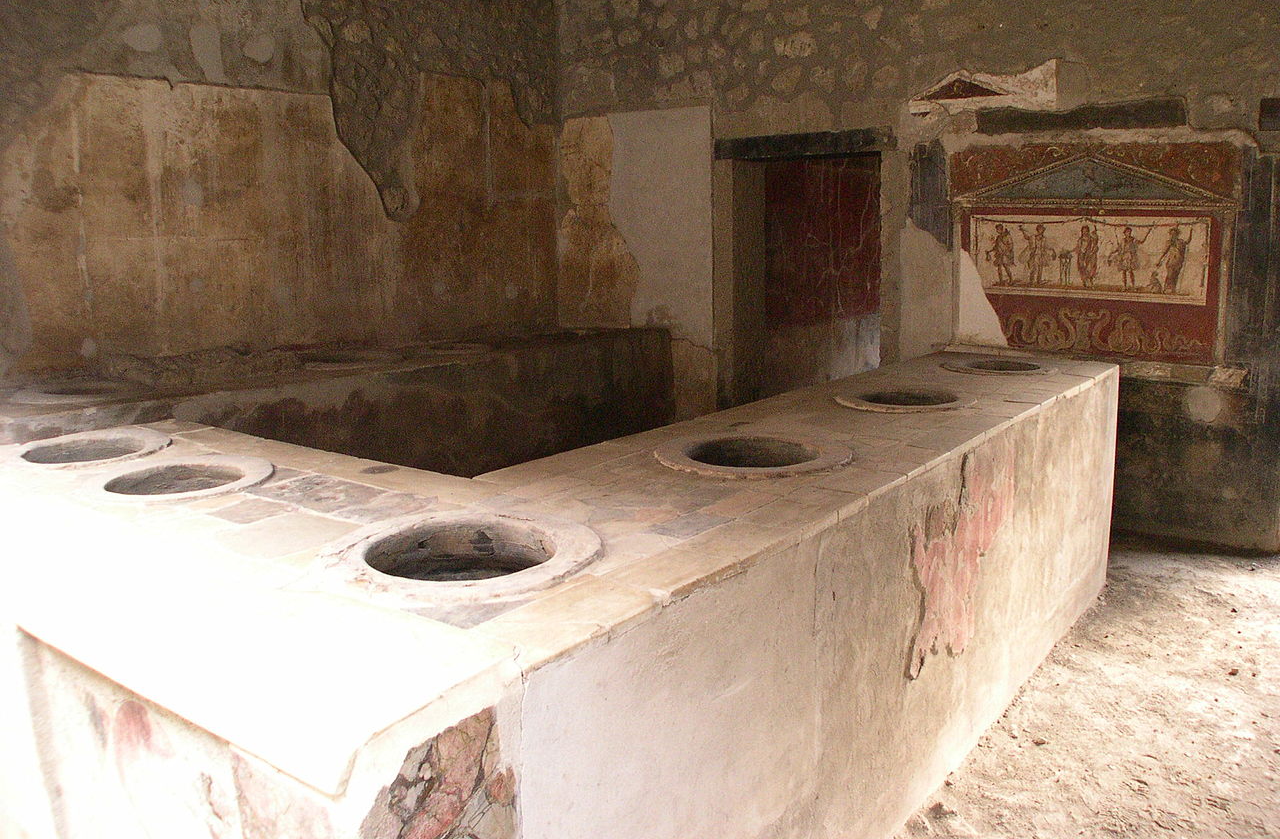 Mosborne01, CC BY-SA 3.0, Wikimedia Commons
Mosborne01, CC BY-SA 3.0, Wikimedia Commons
They Found Leftovers
The thermopolium held eight terracotta pots containing the remnants of meals from 2,000 years ago, including duck, goat, pig, fish, and snails—along with drinking bowls, flasks, amphorae, and jars for cooking stews and soup.
They Made Signs For Their Customers
One of the frescoes in the restaurant showed an image of a collared dog on the leash, which has led some researchers to posit this might have been a reminder to customers to keep their pets leashed while inside.
They Had Toy Dogs
Even back in the days of Ancient Rome, people were already selectively breeding their dogs for more and more extreme traits. The first proof of this came from Pompeii, where archaeologists discovered the preserved skeleton of an adult dog that was only eight inches at the shoulder.
The rich love their little dogs, don't they!
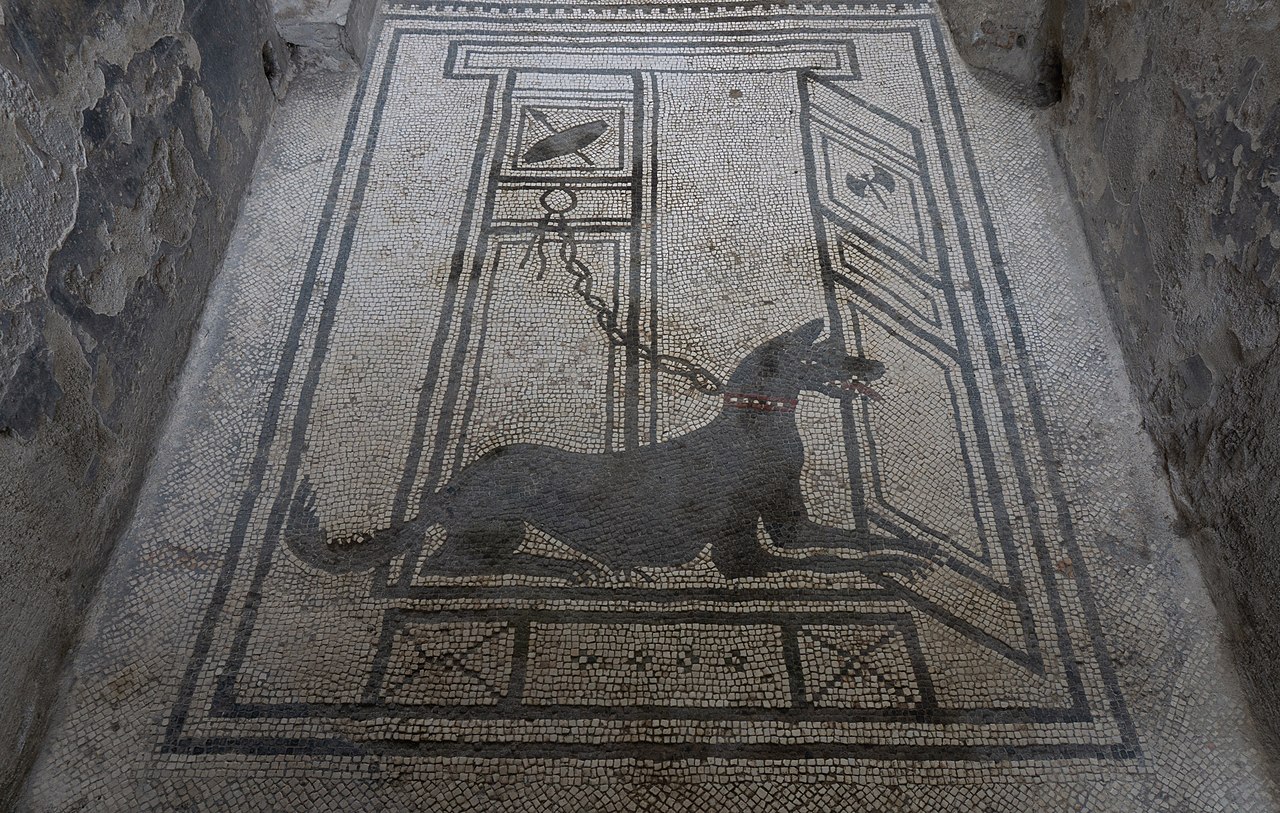 Sumit Surai, CC BY-SA 4.0, Wikimedia Commons
Sumit Surai, CC BY-SA 4.0, Wikimedia Commons
The City Has Taught Us About Rome
Few Roman ruins can match the preservation at Pompeii, and we have learned a lot about Ancient Roman cities and infrastructure from the site. Some of the buildings that have been preserved include a meat market, a baker, pubs, restaurants, hotels, public baths, and a grand amphitheater.
They Loved Bread
You didn't have to walk far in Pompeii if you wanted some bread. The city had at least 31 bakeries, with the largest called the House of the Oven.
They Told Stories Through Art
The 2024 discovery of a large dining hall revealed more stunning frescoes. These artworks portrayed stories from mythology, such as Helen of Troy and Paris, and Apollo trying to woo Princess Cassandra.
 Unknown Author, Wikimedia Commons
Unknown Author, Wikimedia Commons
They Painted It Black
Where there weren't frescoes, the walls of the dining hall were painted black, which researchers believe was to hide the soot from indoor lamps.
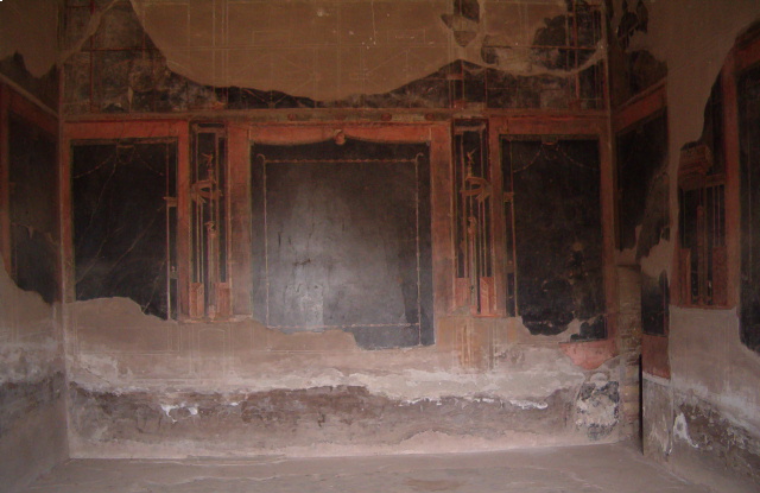 Istvánka, CC BY-SA 3.0, Wikimedia Commons
Istvánka, CC BY-SA 3.0, Wikimedia Commons
It's Getting Worse
The reason that Pompeii was so well-preserved is that the ash shielded it from air and moisture for 2,000 years. We finally brought it to light, but that comes at a cost. The more that we uncover, the more we risk the ruins deteriorating due to weather, sunlight, erosion, and water damage.
We're Losing Frescoes
Though the largest and most spectacular sites have been preserved, much of the city that was once excavated has been left to the elements. As a result, many frescoes have begun to fade.
Buildings Are Collapsing
One building, called the House of the Gladiators, collapsed in 2010 after heavy rainfall struck Pompeii. A lack of proper drainage was attributed to the collapse, leading to accusations of neglect on the part of conservationists.
There's More Under There
As of now, about two thirds of Pompeii have been excavated, leaving a lot still buried under the ash. However, as the ruins that we have uncovered continue to deteriorate, the future of the site is up to us.
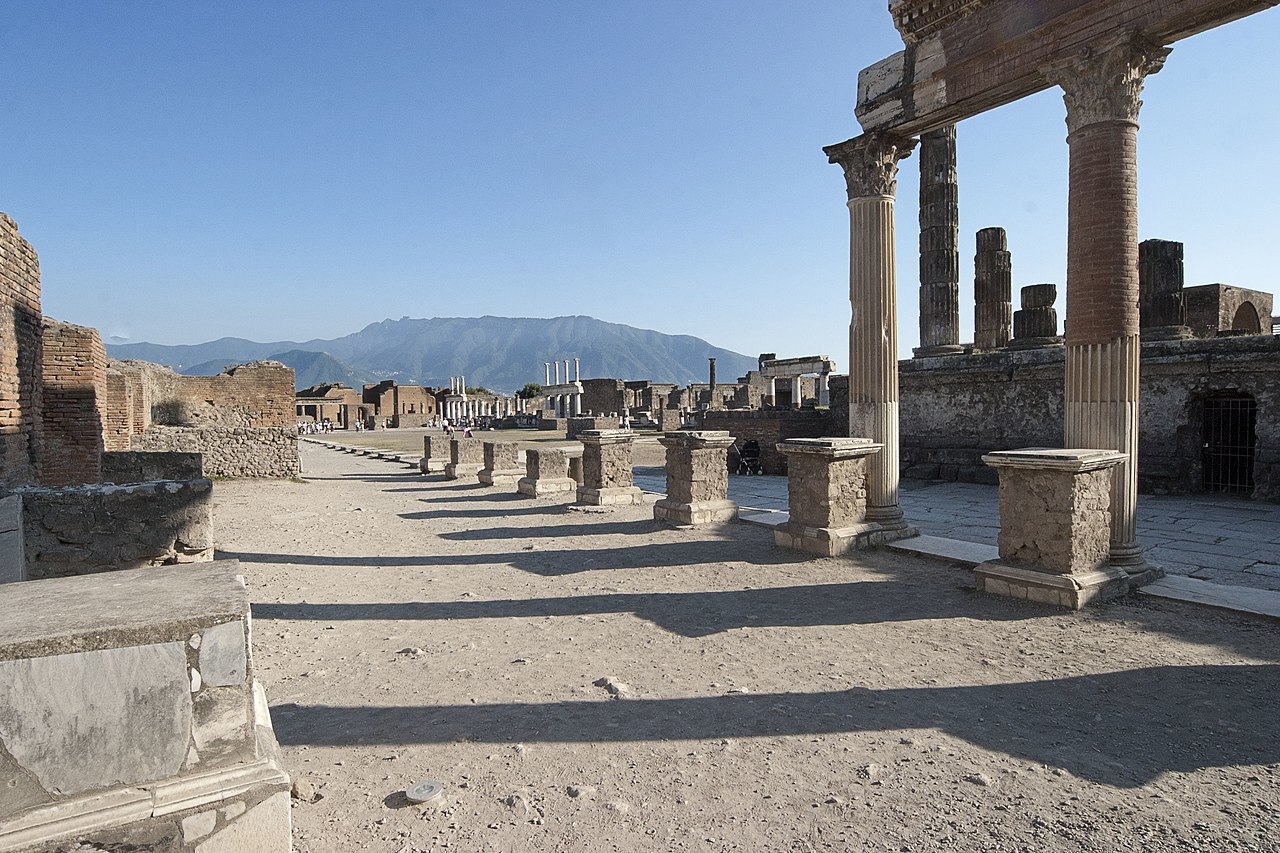 L-BBE, CC BY 3.0, Wikimedia Commons
L-BBE, CC BY 3.0, Wikimedia Commons
We're Focused On Conservation
While a third of Pompeii remains buried, current efforts are focused almost entirely towards conservation—protecting what we have already uncovered of this remarkable and irreplaceable World Heritage Site.
The Antiquarium Of Pompeii
First constructed in the 19th century as a place to exhibit the remarkably preserved finds from the city, the Antiquarium of Pompeii was closed for 36 years after 1980 before reopening in 2016—and reopening permanently in 2021.
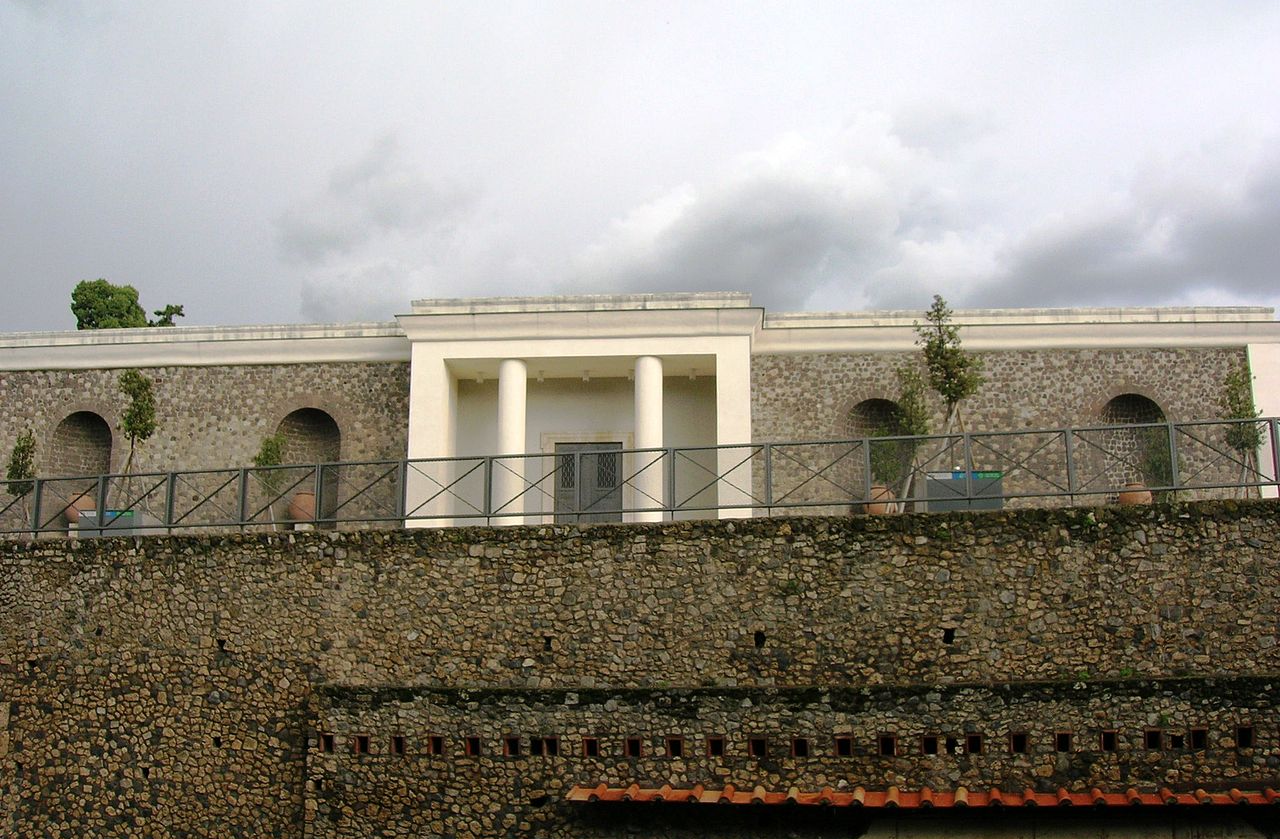 Mentnafunangann, CC BY-SA 3.0, Wikimedia Commons
Mentnafunangann, CC BY-SA 3.0, Wikimedia Commons
The Best Place To See The Past
The Antiquarium Of Pompeii not only features haunting artifacts from the excavation of Pompeii, like the casts of people and pets contorted in pain and terror, but documents the history of the Roman city.
They Were Tempting Fate
Mount Vesuvius destroyed Pompeii, but it also gave the city life. An even more ancient eruption had left a broad, lava plateau by the water, on which people built a thriving, seaside city.
But those people weren't actually Romans.
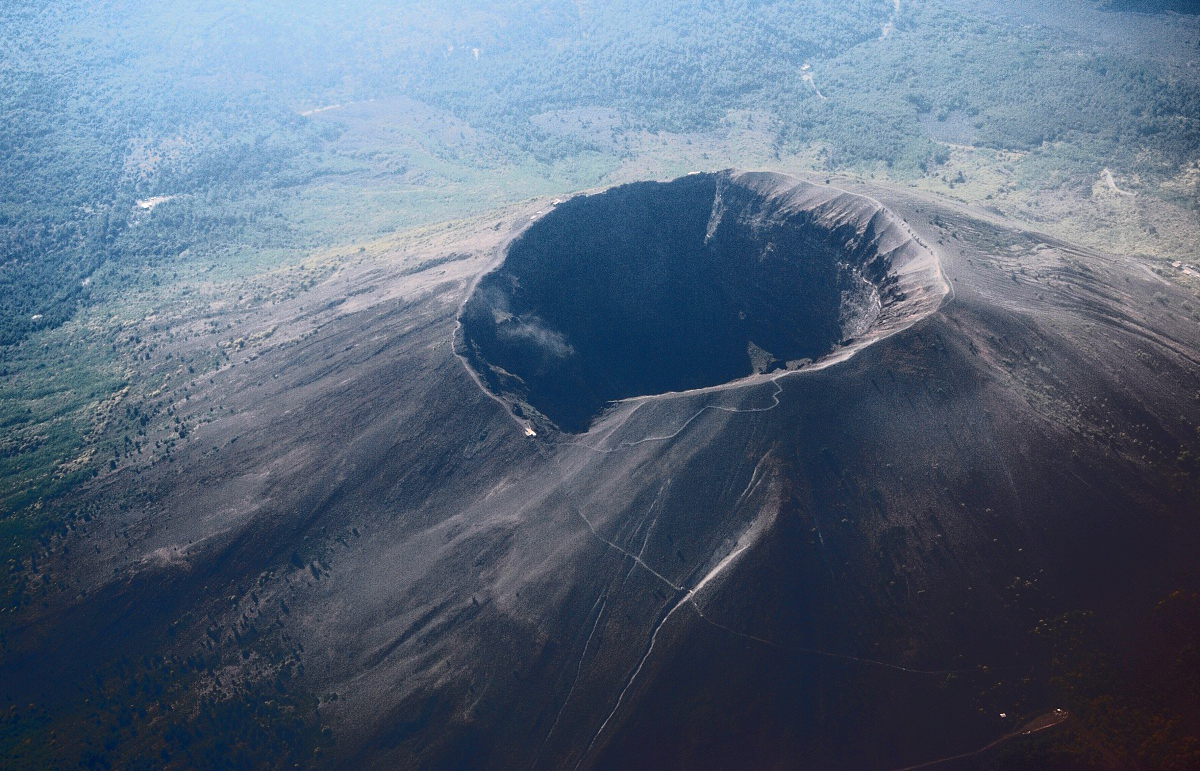 Pastorius, CC BY-SA 3.0, Wikimedia Commons
Pastorius, CC BY-SA 3.0, Wikimedia Commons
It Wasn't Originally Roman
Long before the Romans arrived, another Italic tribe called the Osci founded the first city at the site of Pompeii in the 7th century BC. It's believed they named their city after their word for the number five: Pompe.
Soon, it became a remarkably metropolitan city.
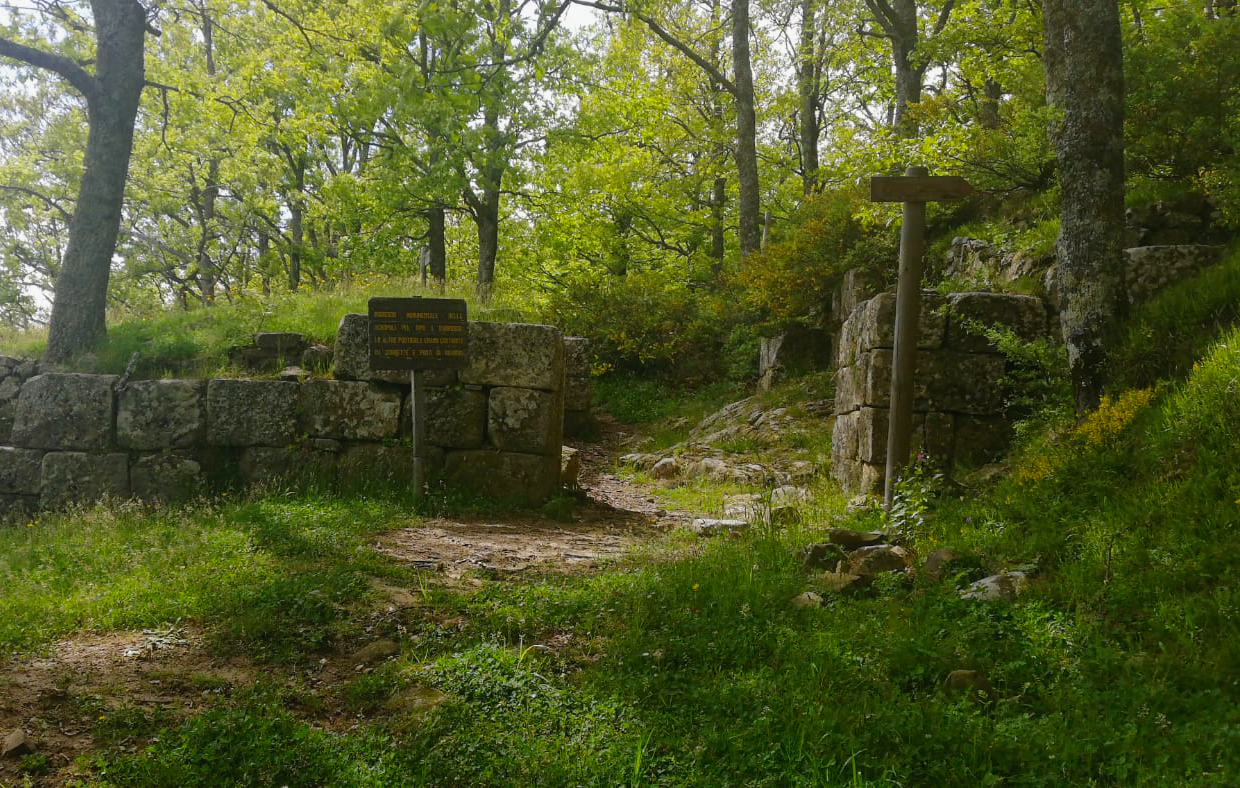 Mikyx1994, CC BY-SA 4.0, Wikimedia Commons
Mikyx1994, CC BY-SA 4.0, Wikimedia Commons
Many People Considered It A Safe Haven
Both the Greeks and the Phoenicians were extremely active in trade throughout the Mediterranean Sea, and both cultures used the city as a safe port in Italy. But it wouldn't stay safe forever.
It Had A Great Wall
As the city continued to grow and flourish as a hub for maritime trade, residents built a broad city wall. Contemporary authors noted how impressive it was that such a small settlement had built such a large fortification—and we mean large.
They Farmed Behind The Wall
So great was the potential threat from the land, and so wealthy was the settlement, that they actually built the wall far beyond the confines of the city to include large tracts of agricultural land.
They Had Foreign Masters
Over the years, different powers traded control over Pompeii. First it was the Greeks, then in 524 BC the Etruscans from the mainland took over.
They Got To Govern Themselves
Luckily for Pompeii, both the Greeks and the Etruscans pretty much left the city to run itself. Plus, the Etruscans came with some serious benefits.
It Grew More Impressive
The Etruscans built a forum, a market, and a Temple to Apollo. The city was looking a lot finer than it had before they arrived—but in 474 BC, the hot potato switched back when the Greeks defeated the Etruscans and regained control of the area.
But the biggest bad of all was right next door—and they were amassing their power.
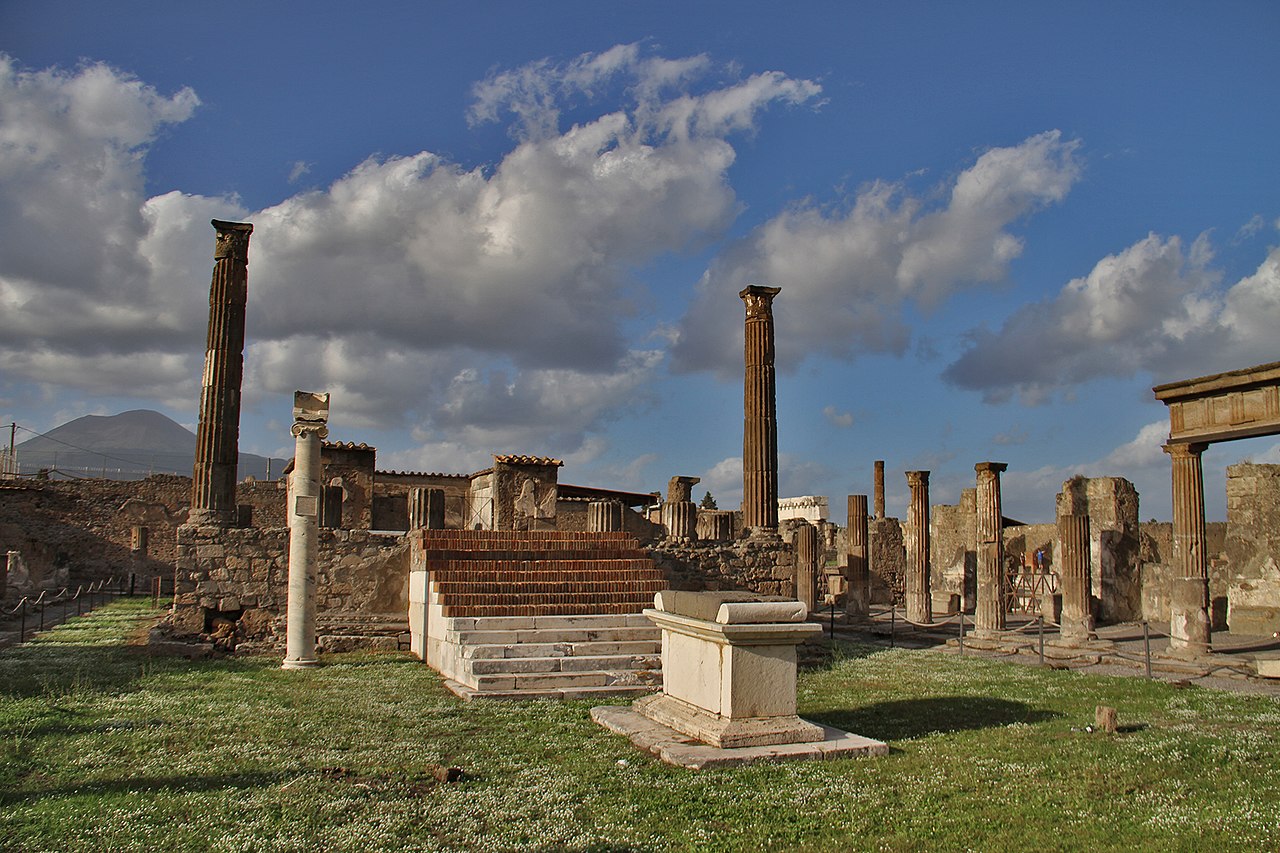 General Cucombre, CC BY 2.0, Wikimedia Commons
General Cucombre, CC BY 2.0, Wikimedia Commons
They Came Under The Sway Of Rome
Rome took control of Pompeii in 290 BC, with a similar arrangement as before in regard to autonomy. It quickly proved a fruitful relationship.
The City Flourished
Not only did Rome build an even more impressive wall around Pompeii, but more than that, they made Pompeii incredibly wealthy. Between taking part in the plunder from Rome's conquests and the volume of trade they saw under Roman protection, it was a good time to live in Pompeii.
But of course, those good times came to a rather spectacular end.
They Got Cocky
Pompeii rebelled against Rome in 89 BC, and I bet you can guess how that worked out. Rome captured the city by forced and made it an official roman colony named Colonia Cornelia Veneria Pompeianorum.
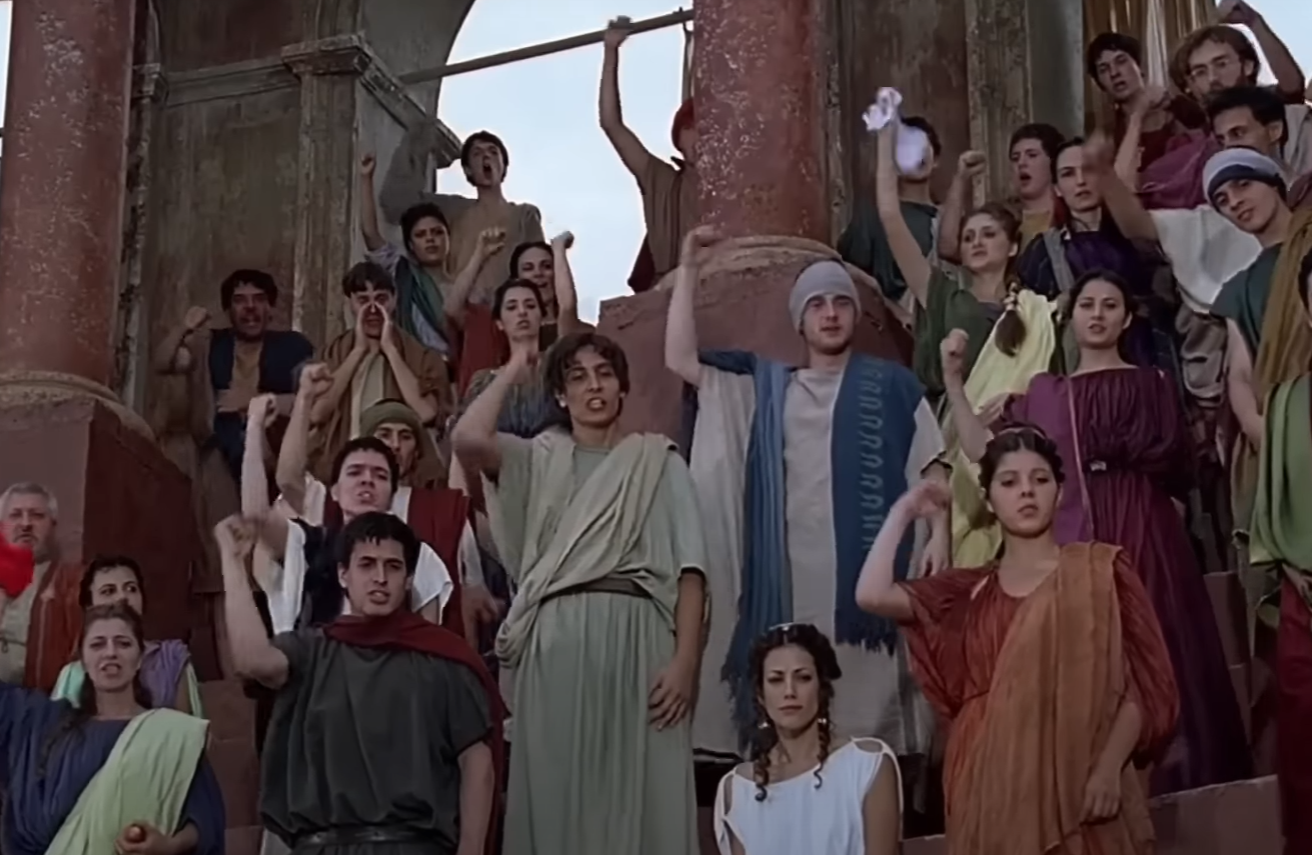 Janus Media, Pompei, ieri, oggi, doman (2007)
Janus Media, Pompei, ieri, oggi, doman (2007)
They Got To Stay
While Rome dispossessed those who rebelled of their property, most Pompeiians were granted Roman citizenship and allowed to carry on their lives. And if they thought things in Pompeii were good before, this would be a whole new level.
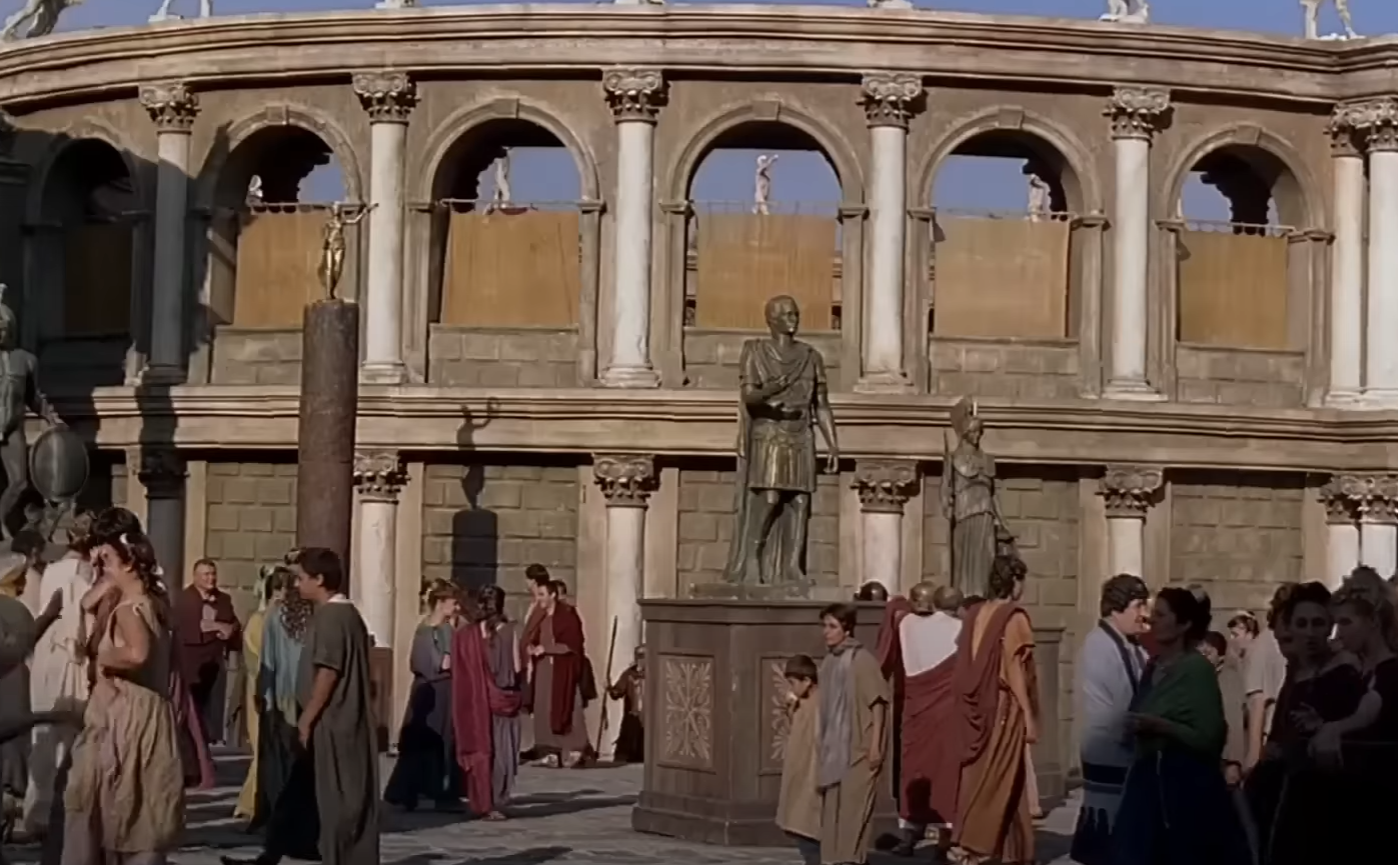 Janus Media, Pompei, ieri, oggi, doman (2007)
Janus Media, Pompei, ieri, oggi, doman (2007)
It Became A Vacation Town
Pompeii grew more and more wealthy, and now, wealthy Romans who wanted a place on the Bay of Naples started building their villas there. Picture the Hamptons with even more marble.
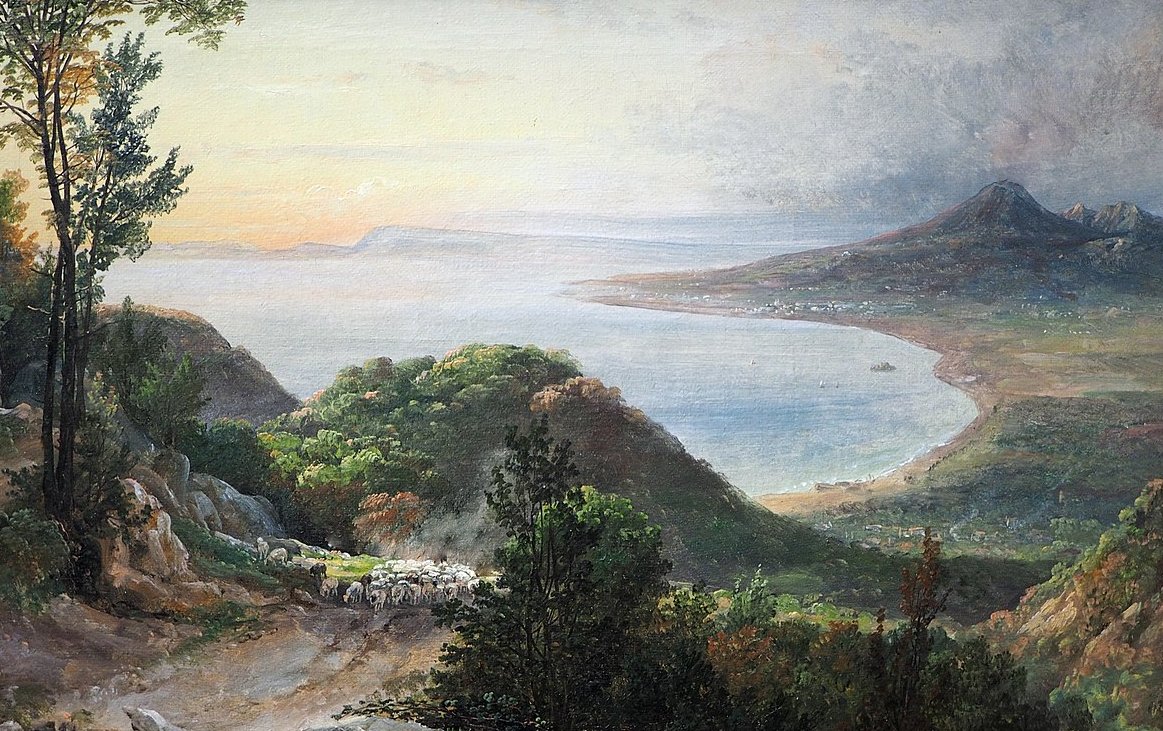 Johan Christian Dahl, Wikimedia Commons
Johan Christian Dahl, Wikimedia Commons
Rome Made It Into A Spectacular City
As Pompeii became an essential port for maritime goods heading to Rome, the Romans filled the city with many grand building projects, including the great Amphitheatre of Pompeii, the Forum Baths, and the Odeon.
It Wasn't All Glossy
Pompeii was a glamorous seaside destination, but there was a darkness simmering underneath the facade. In 59, ethnic tensions between the Pompeiians and the Nucerians led to widespread riots and bloodshed.
We know about it because the Romans were forced to send in the Praetorian Guard to restore order.
They Were Used To Earthquakes
Pompeii's entire rise took place under the watchful eye of the rumbling Mount Vesuvius. Minor earthquakes were so common that locals barely paid them any mind.
But in 62 AD, the mountain sent Pompeii a warning.
Destruction Begins
In 62, a severe earthquake believed to be a 5 or a 6 on the Richter scale caused widespread destruction, fires, and panic in Pompeii and the nearby cities of Herculaneum and Nuceria.
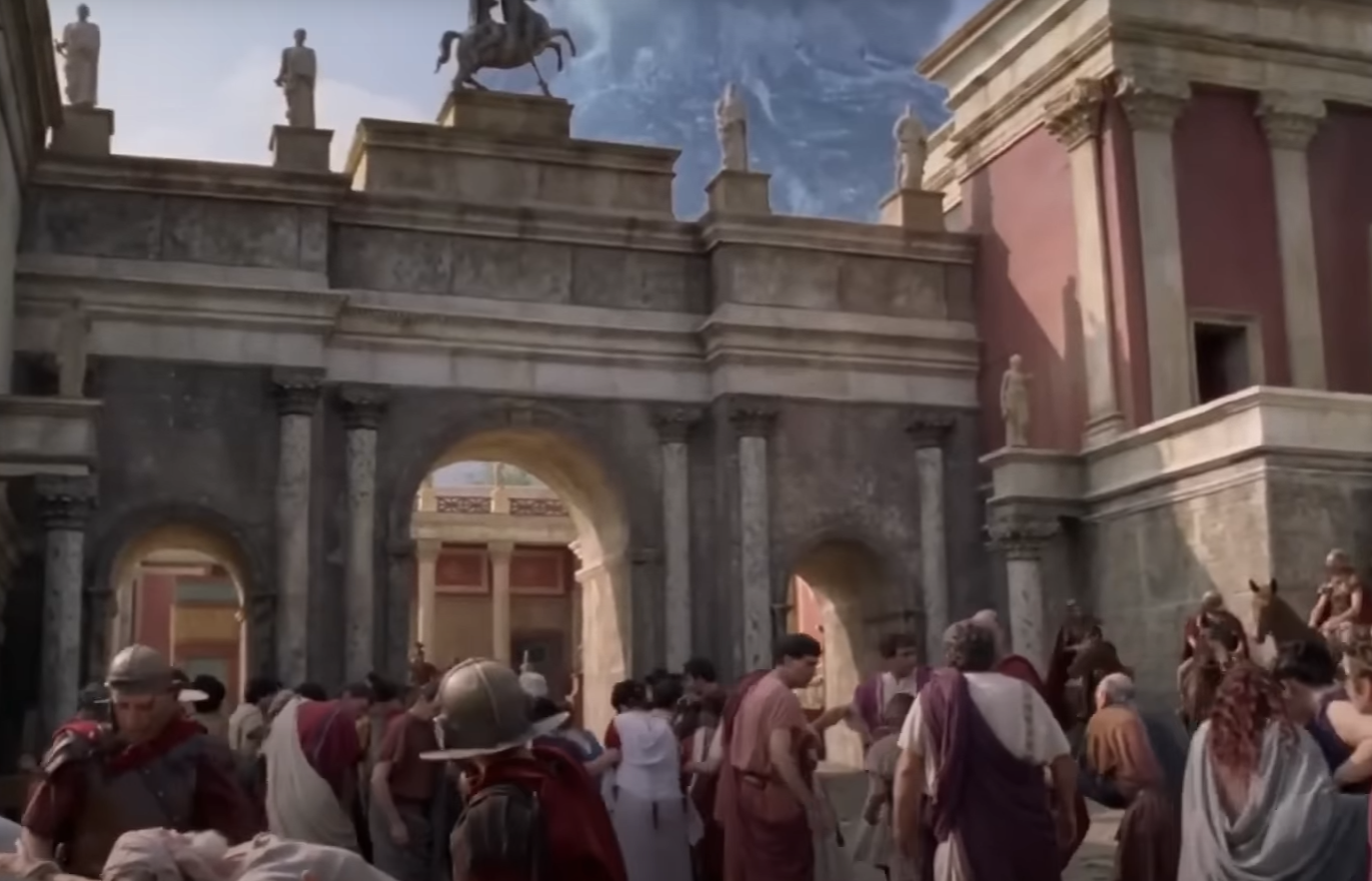 Janus Media, Pompei, ieri, oggi, doman (2007)
Janus Media, Pompei, ieri, oggi, doman (2007)
They Weren't Going Anywhere
The people of Pompeii just rolled up their sleeves and defiantly built back their city even bigger and better than before. They should have listened to the mountain.
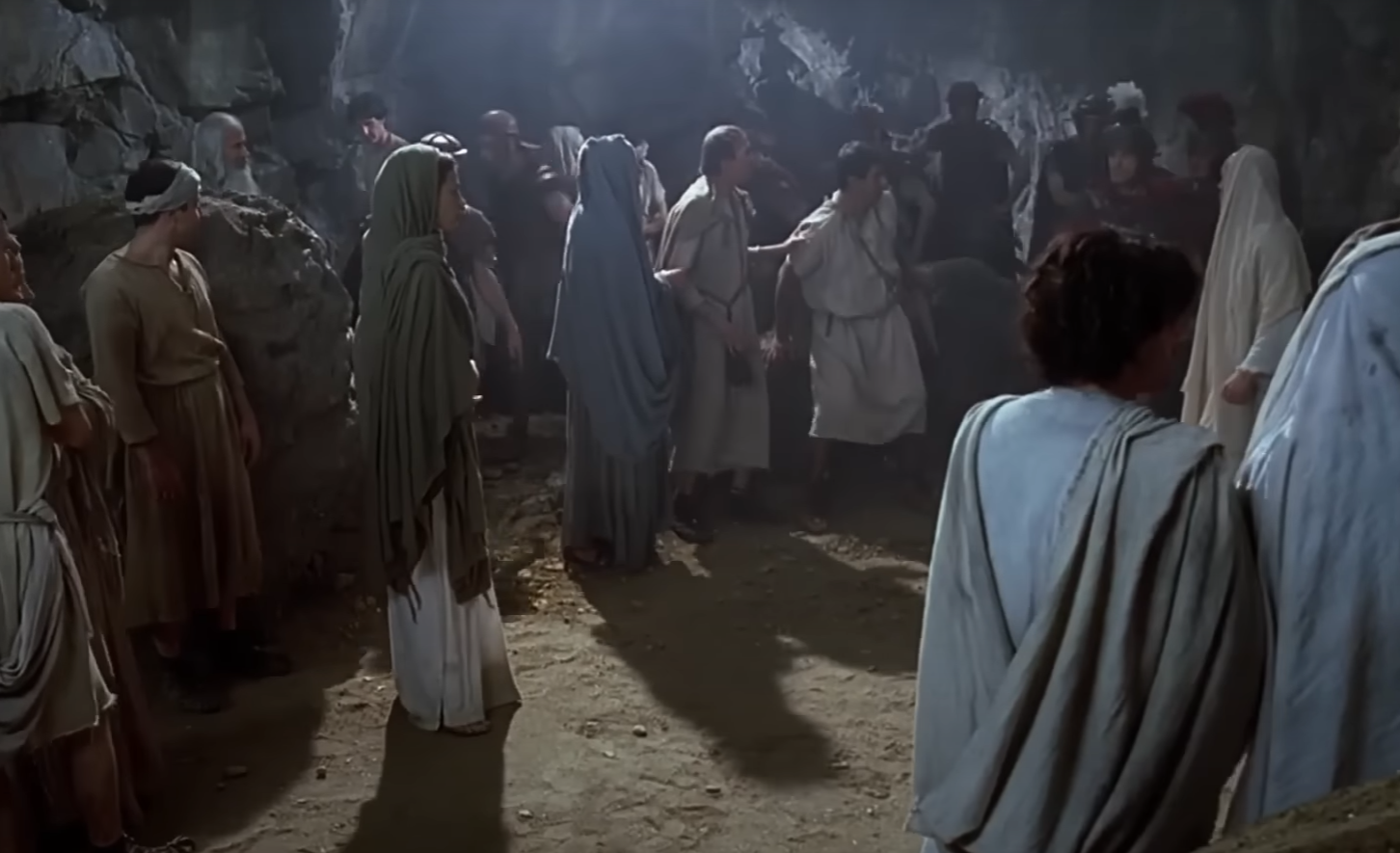 Janus Media, Pompei, ieri, oggi, doman (2007)
Janus Media, Pompei, ieri, oggi, doman (2007)
The City Had Never Looked Better
With the cash still rolling in, Pompeii was rebuilt with the best technology the Roman world had to offer. They added brilliant statues and frescoes, wall-heating, and window glass.
It would all be under the ash before the century was out.
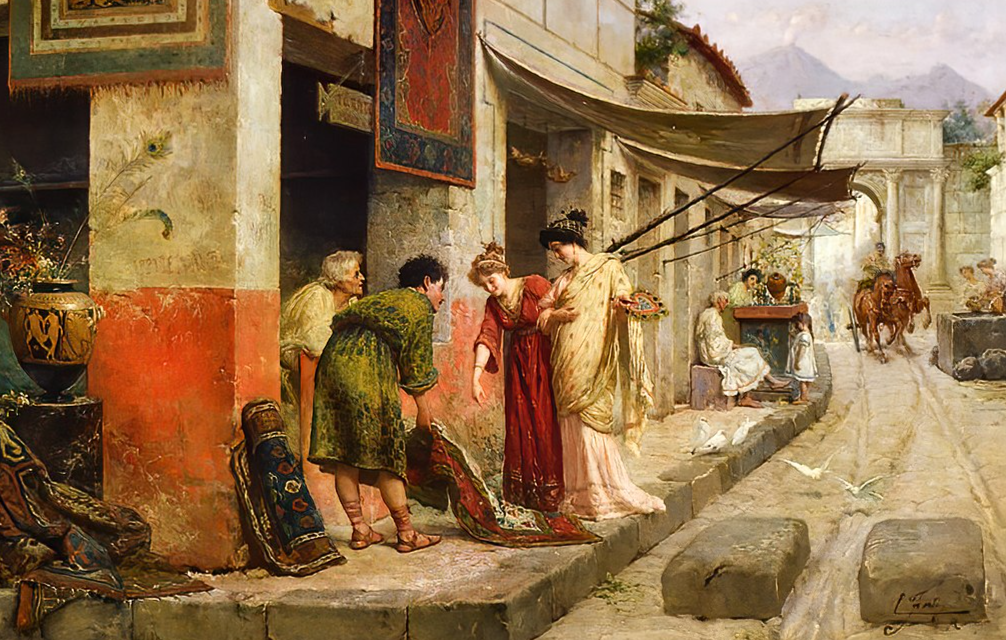 Eduardo Ettore Forti, Wikimedia Commons
Eduardo Ettore Forti, Wikimedia Commons
It Had A Thriving Population
By 79 AD, Pompeii had a reported population of 20,000. It was doing better than it had ever done before, earthquake or no earthquake.
But what about an eruption?
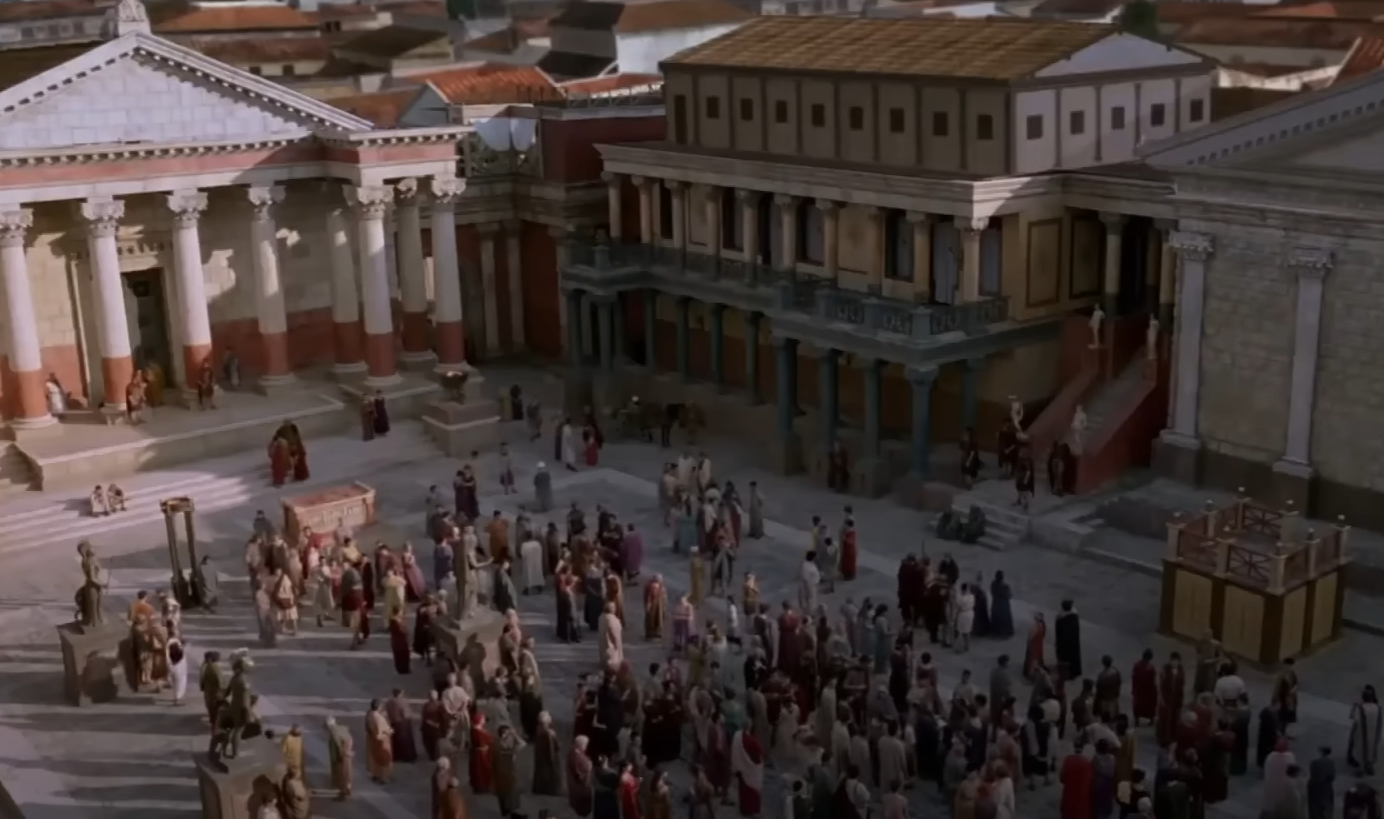 Janus Media, Pompei, ieri, oggi, doman (2007)
Janus Media, Pompei, ieri, oggi, doman (2007)
The Earth Started Shaking Again
In the four days leading up to the eruption of Mount Vesuvius, several minor earthquakes were reported in the region, but no one paid them any mind. In fact, in those very days, Pliny the Younger wrote that they "were not particularly alarming because they are frequent in Campania".
By the time the mountain blew its top, it was too late for most of them.
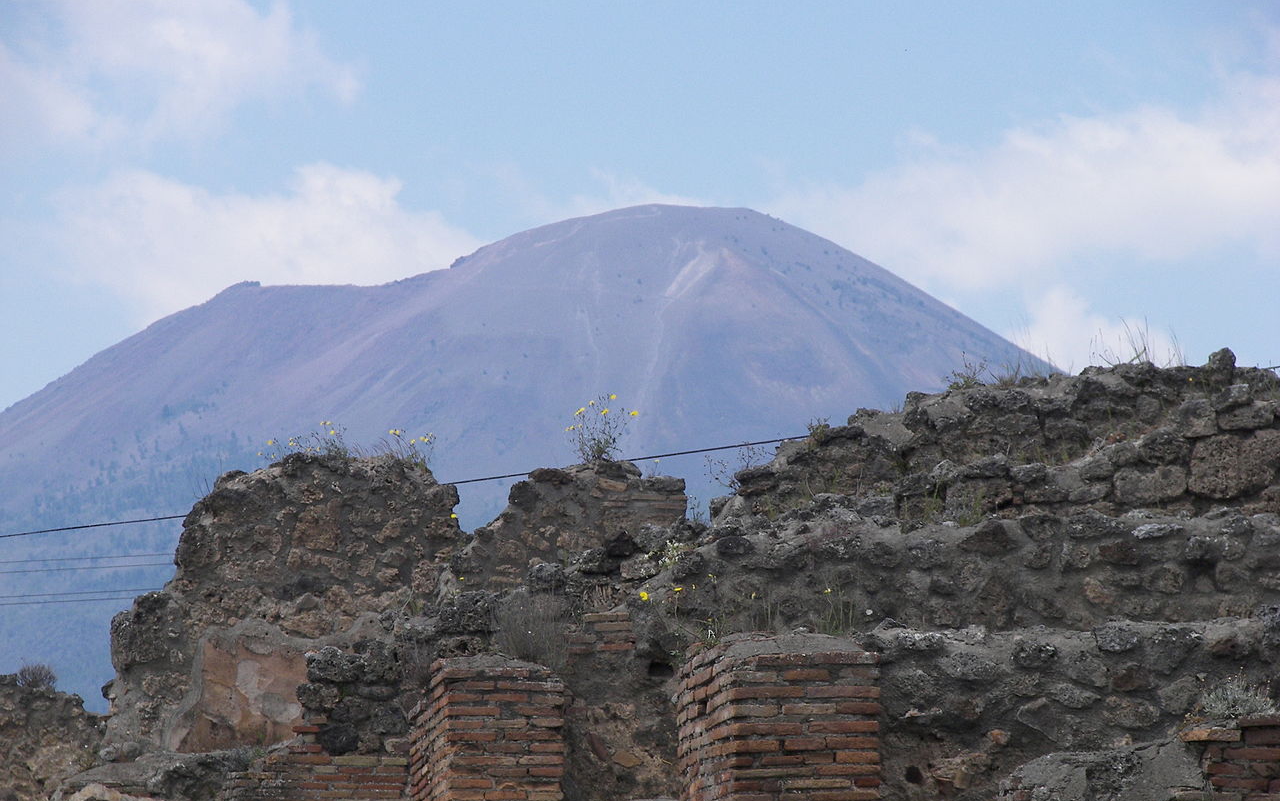 Wknight94, CC BY-SA 3.0, Wikimedia Commons
Wknight94, CC BY-SA 3.0, Wikimedia Commons
An Eye-Witness Told His Tale
Pliny the Elder, the writer of the only surviving account from someone there that day, was staying at Miseno, about 20 miles across the Sea of Naples.
Just 17 years old at the time, he had a front row seat to one of the most impressive and terrifying events in history.
 Wellcome Images, CC BY 4.0, Wikimedia Commons
Wellcome Images, CC BY 4.0, Wikimedia Commons
The Morning Started Normally
The first half of the day that Vesuvius erupted passed totally normally. Then suddenly, at 1:00 in the afternoon, the slumbering giant...exploded.
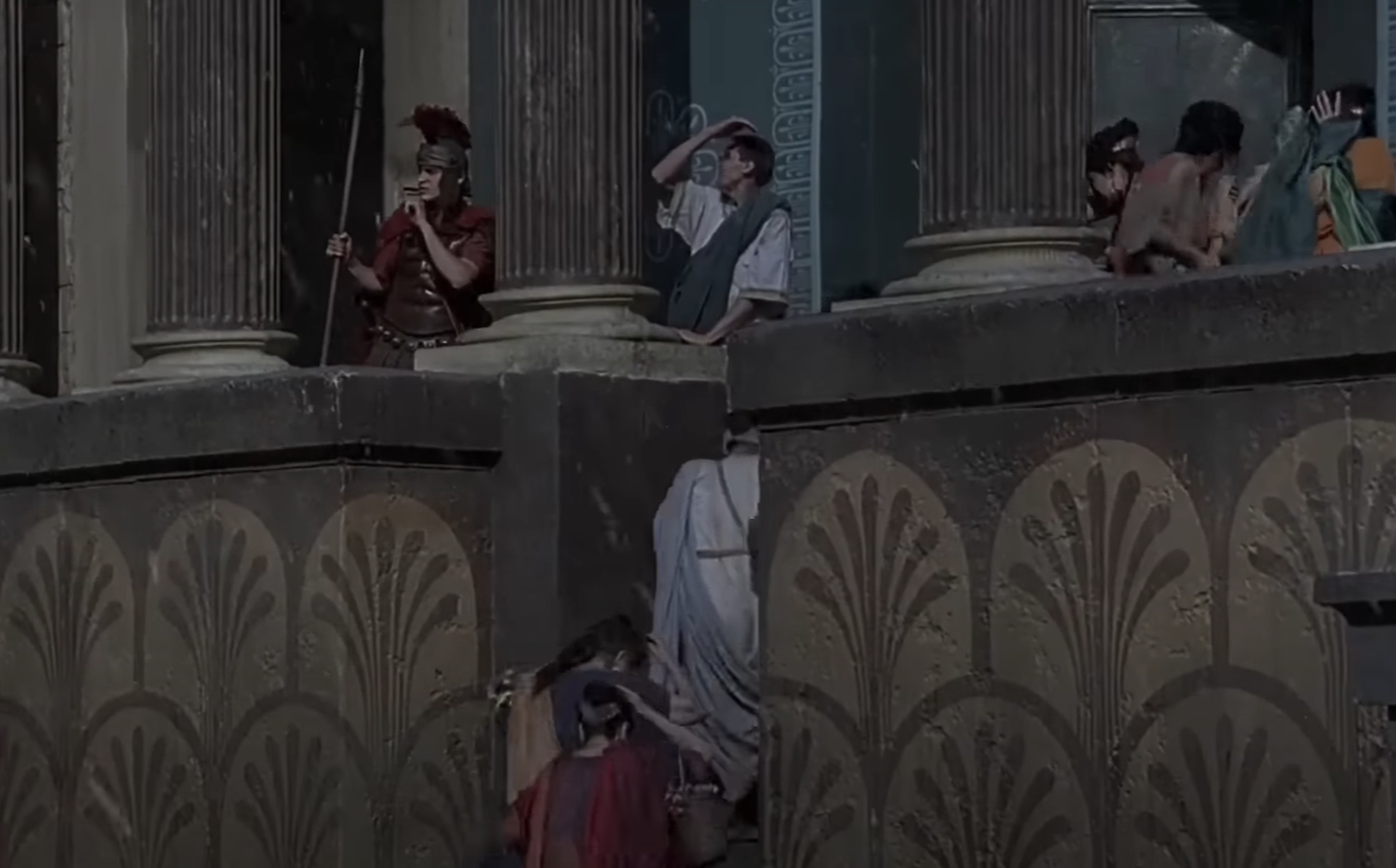 Janus Media, Pompei, ieri, oggi, doman (2007)
Janus Media, Pompei, ieri, oggi, doman (2007)
The Ash Started To Come Down
From across the Bay, Pliny saw an enormous column of smoke rising into the sky as ash and pumice rained down on the land below. But the eruption was nowhere near over.
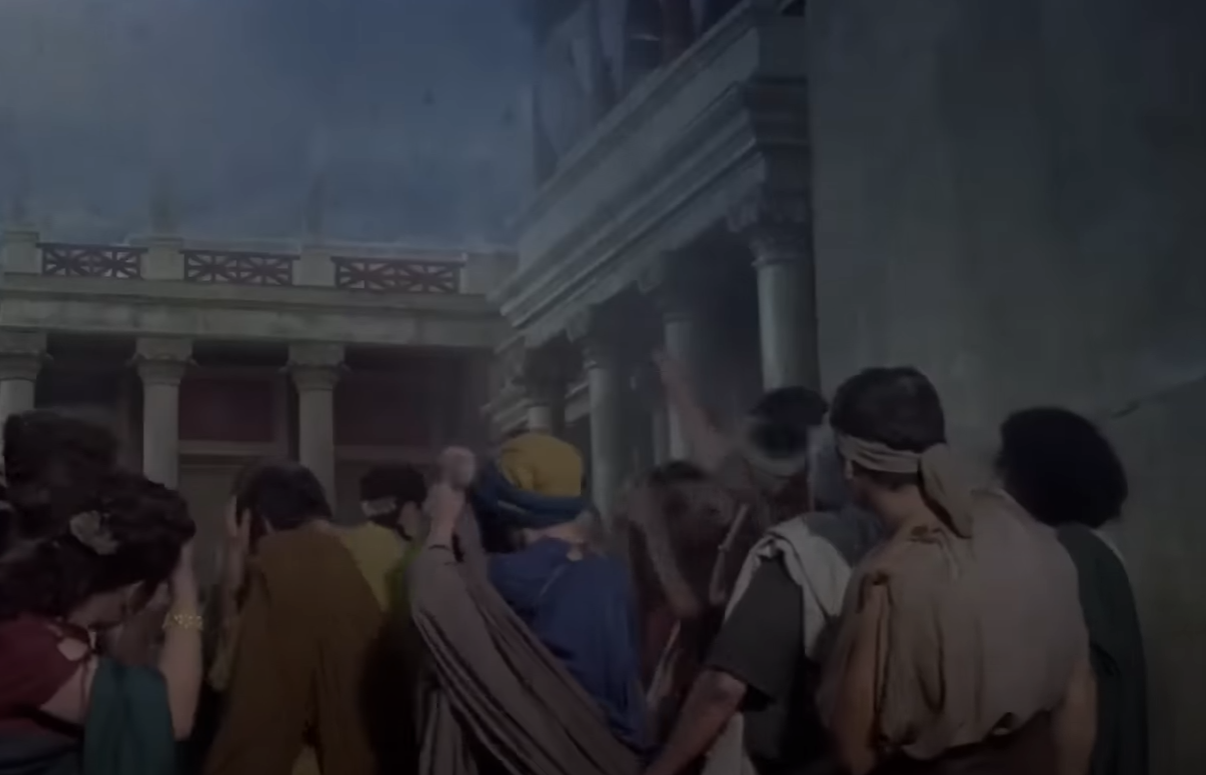 Janus Media, Pompei, ieri, oggi, doman (2007)
Janus Media, Pompei, ieri, oggi, doman (2007)
It Lasted Two Days
The destruction caused by the volcano was immediate—but it didn't slow down, either. By the following morning, in fact, it had gotten even worse. Pyroclastic flows began pouring down the mountain—the light that they gave could be seen for miles around.
Nearly everyone still living in the region fled for their lives. It was like the underworld had come to earth.
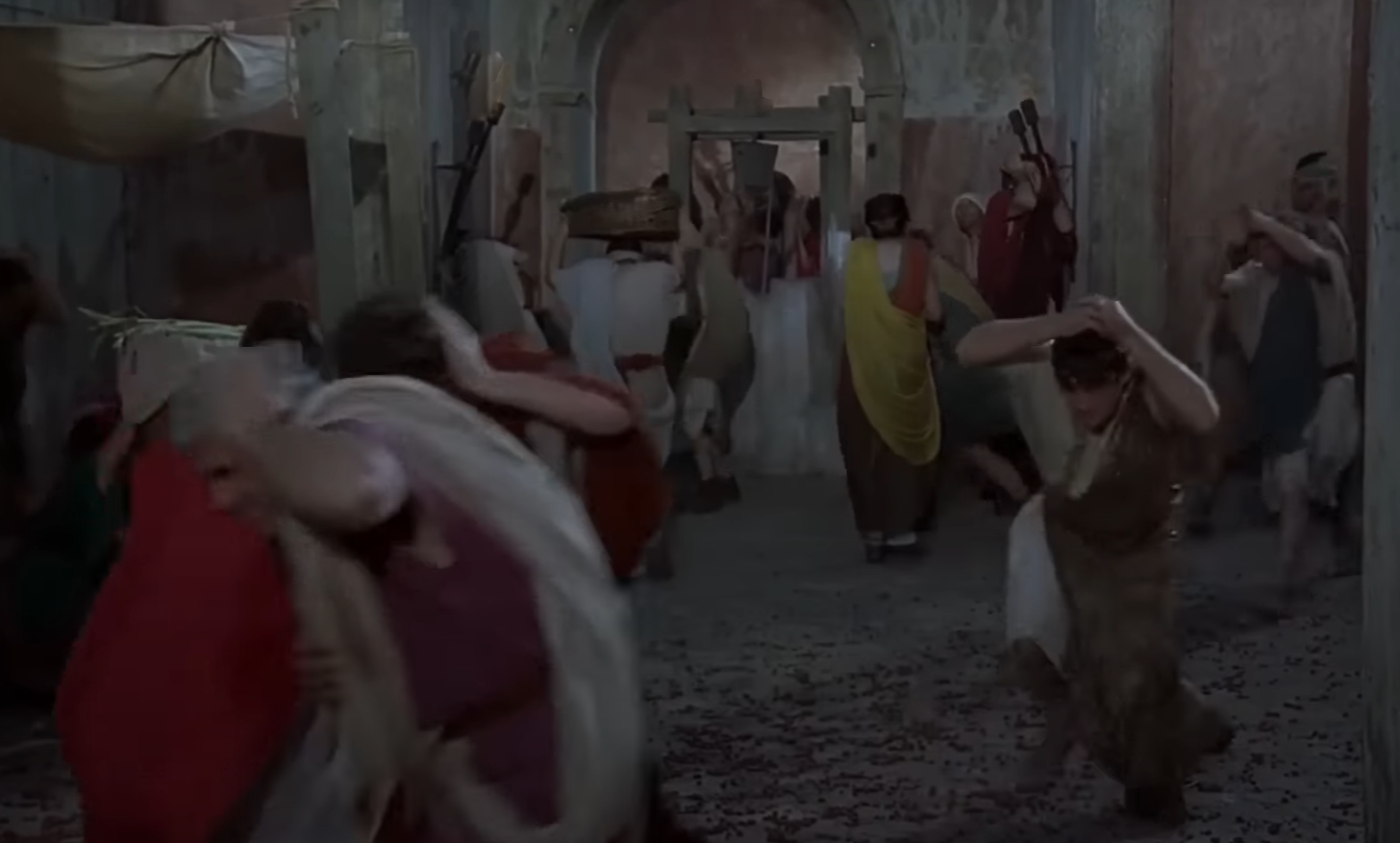 Janus Media, Pompei, ieri, oggi, doman (2007)
Janus Media, Pompei, ieri, oggi, doman (2007)
The Flows Were Terrible And Destructive
Waves of molten-hot lava poured down the mountain, sweeping away anything in their path. Entire structures were blown away and disintegrated.
Of course, any citizen who remained stood even less of a chance.
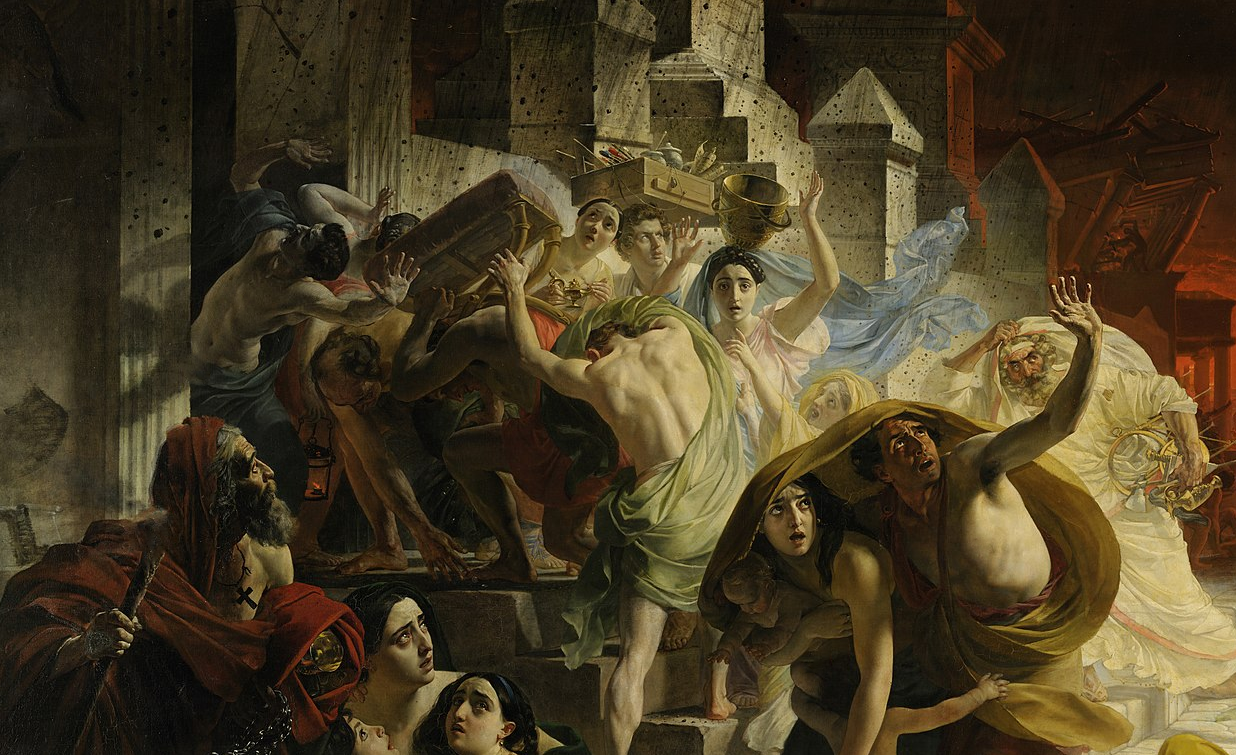 Karl Bryullov, Wikimedia Commons
Karl Bryullov, Wikimedia Commons
The Earth Still Rocked
Even as the eruption began to slow down, the earth continued to shake, sending a tsunami out into the Bay.
Lights In A Black Sky
By the end of the second day, Pliny could no longer feel the effects of the eruption in Miseno—but he still gazed across the bay at the nightmarish scene:
"Broad flames shone out in several places from Mount Vesuvius, which the darkness of the night contributed to render still brighter and clearer... It was now day everywhere else, but there a deeper darkness prevailed than in the thickest night".
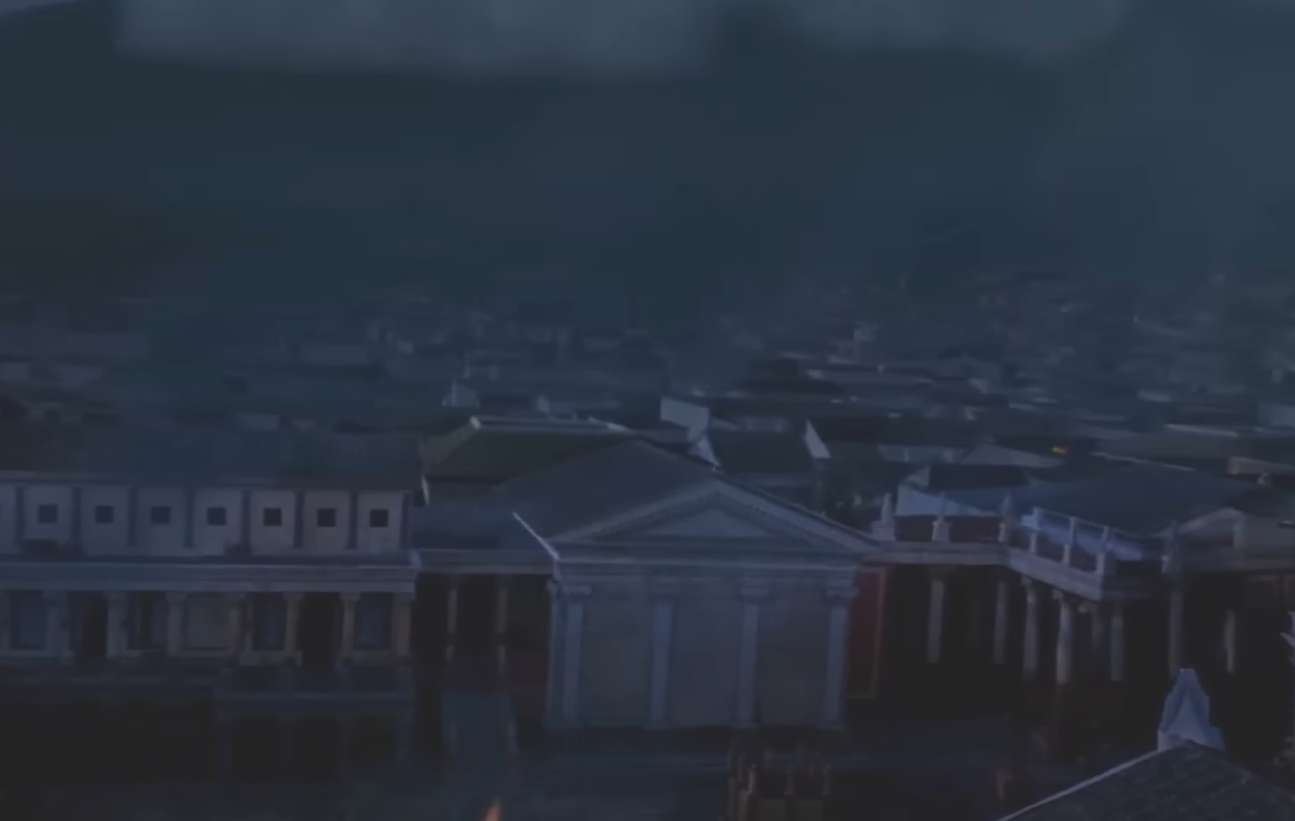 Janus Media, Pompei, ieri, oggi, doman (2007)
Janus Media, Pompei, ieri, oggi, doman (2007)
They Attempted A Rescue
Immediately upon the eruption, Pliny the Younger's father, Pliny the Elder, organized a rescue fleet. One of his dear friends had been in Pompeii, and the Elder personally went to attempt a rescue.
Pliny the Younger was asked to go along, but he refused. It was the right choice.
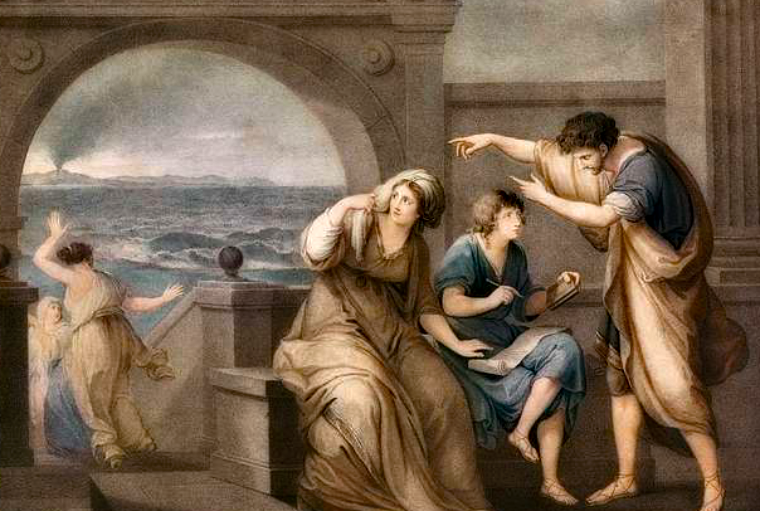 Auktionshaus Michael Zeller, Lindau, Picryl
Auktionshaus Michael Zeller, Lindau, Picryl
He Had To Flee
Soon, the ash began falling on Miseno, and it showed no sign of stopping. Pliny and his remaining family were forced to evacuate on the second morning, as the ash threatened to bury them.
Pliny The Elder Sailed Out Into Hades
Pliny the Elder sailed toward his friend's seaside home, and what he saw is hard to imagine. Ash filled the sky as pumice and hot cinders battered their boat and the sea all around them.
His helmsman suggested they turn back—and Pliny's response is legendary.
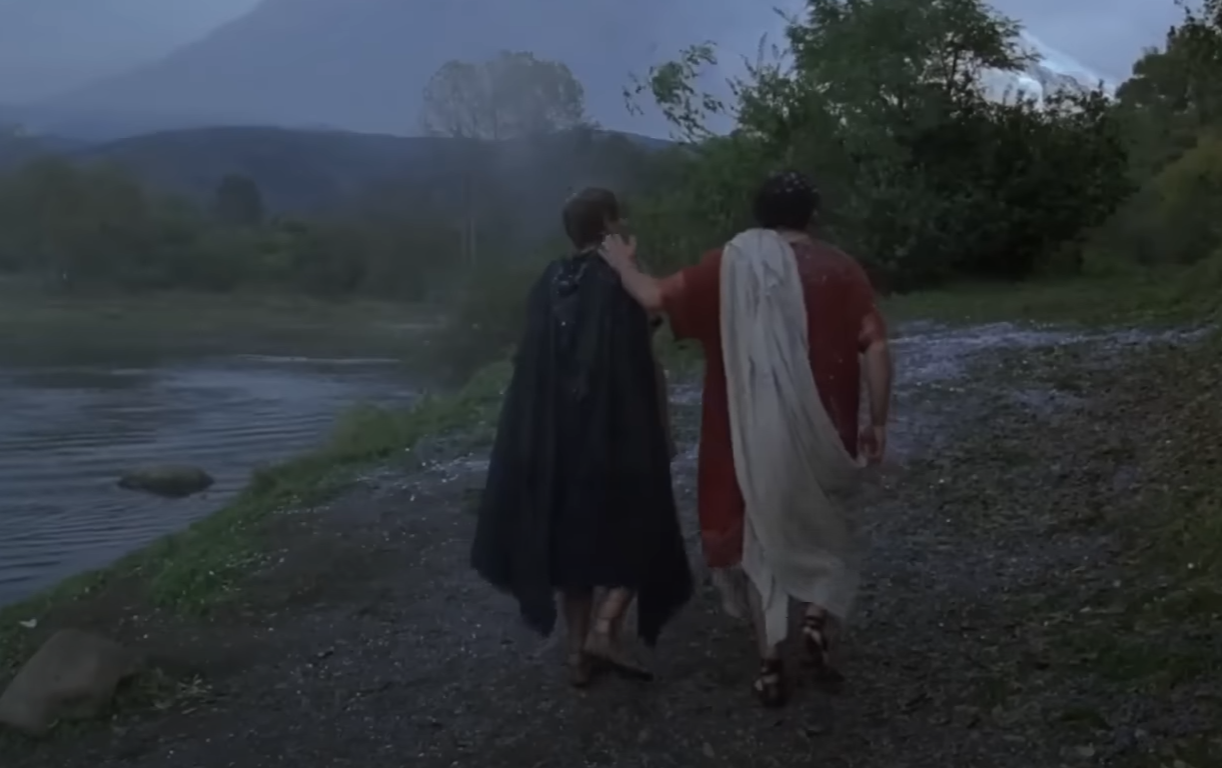 Janus Media, Pompei, ieri, oggi, doman (2007)
Janus Media, Pompei, ieri, oggi, doman (2007)
Fortune Favors The Bold
Undeterred by the nightmarish sea around them, Pliny defiantly exclaimed, "Fortune favors the bold" and demanded they press on. He paid for his hubris with his life.
He Didn't Make It
Pliny managed to make landfall near Pompeii with his rescue team, but he reportedly collapsed sometime during the second day. He couldn't get up, and his companions were forced to abandon him to his fate.
They survived by escaping overland, but Pliny the Elder was never seen again.
He Had Weak Lungs
Pliny the Younger knew that his father had weak lungs, and believed that the poisonous cloud of hot ash was too much for him.
 Bibliothèque interuniversitaire de Santé, Wikimedia Commons
Bibliothèque interuniversitaire de Santé, Wikimedia Commons
The Romans Organized A Relief Effort
The eruption of Vesuvius rocked the Roman world. Emperor Titus immediately organized a relief effort and donated a vast sum from the imperial treasury to help the victims. Sadly, there wasn't much they could do.
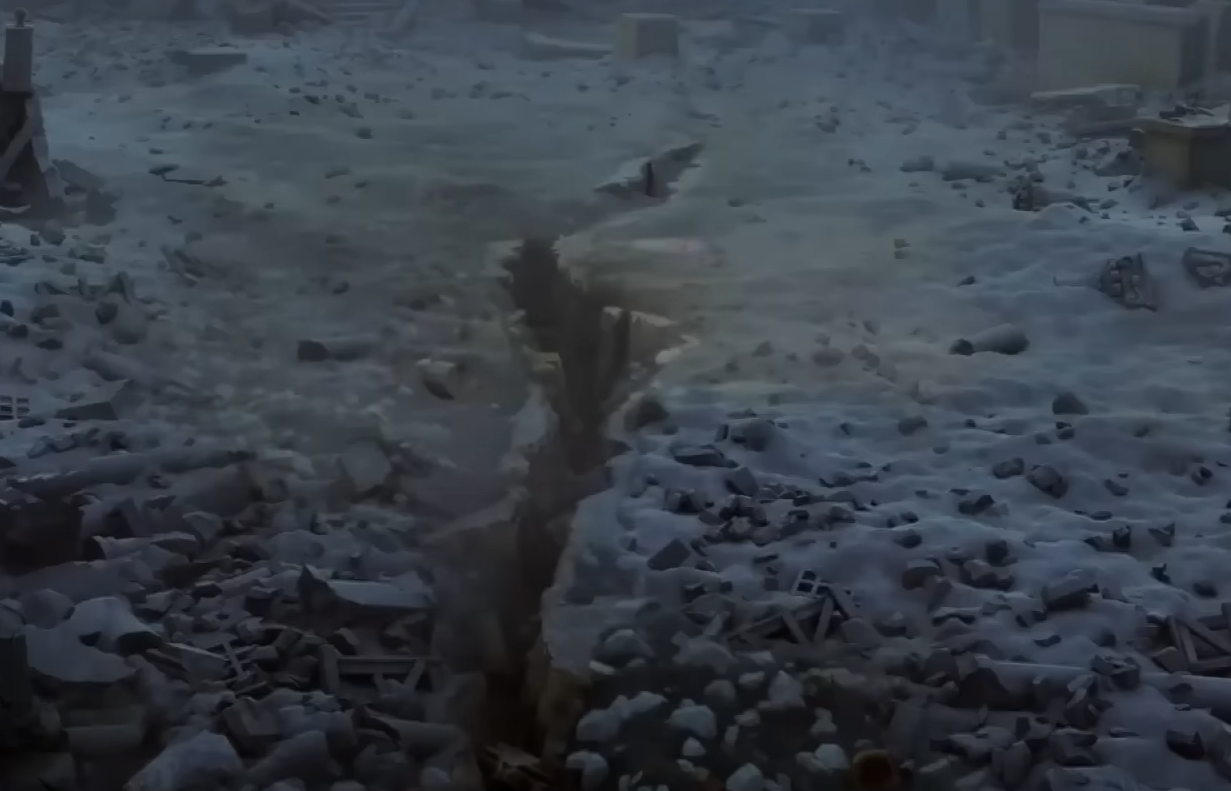 Janus Media, Pompei, ieri, oggi, doman (2007)
Janus Media, Pompei, ieri, oggi, doman (2007)
He Saw The Destruction Himself
Titus himself visited Pompeii once in the days following the eruption, and again a year later to see how restoration was going. Clearly, it wasn't going well. Titus never returned again, and the city was left to be forgotten by history—but not before the locals grabbed everything they could.
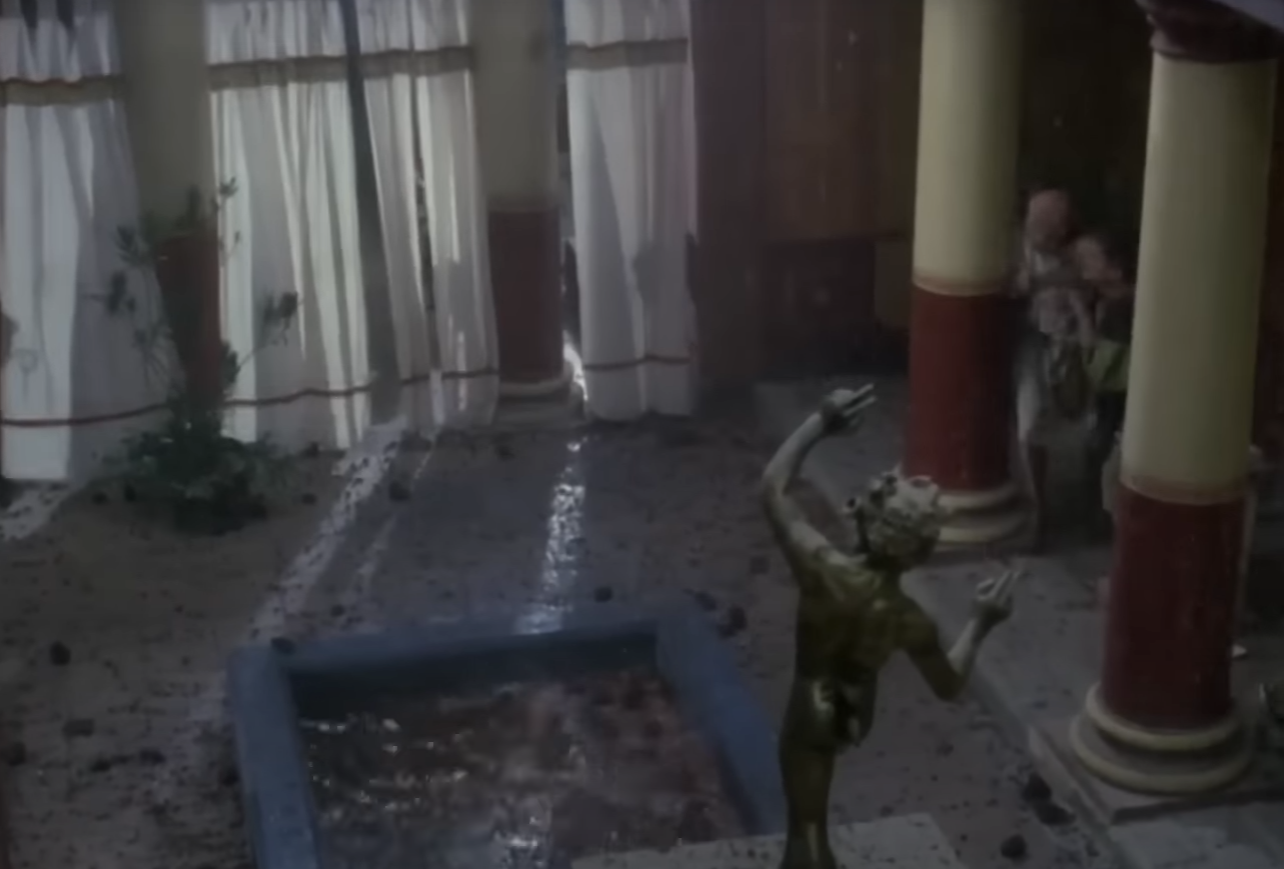 Janus Media, Pompei, ieri, oggi, doman (2007)
Janus Media, Pompei, ieri, oggi, doman (2007)
People Tried To Get What They Could
Vesuvius didn't bury Pompeii entirely, and the tops of some buildings were still visible. Remembering the wealth of the city that once was, both survivors of the eruption and opportunistic looters returned to the site to pilfer anything they could get their hands on.
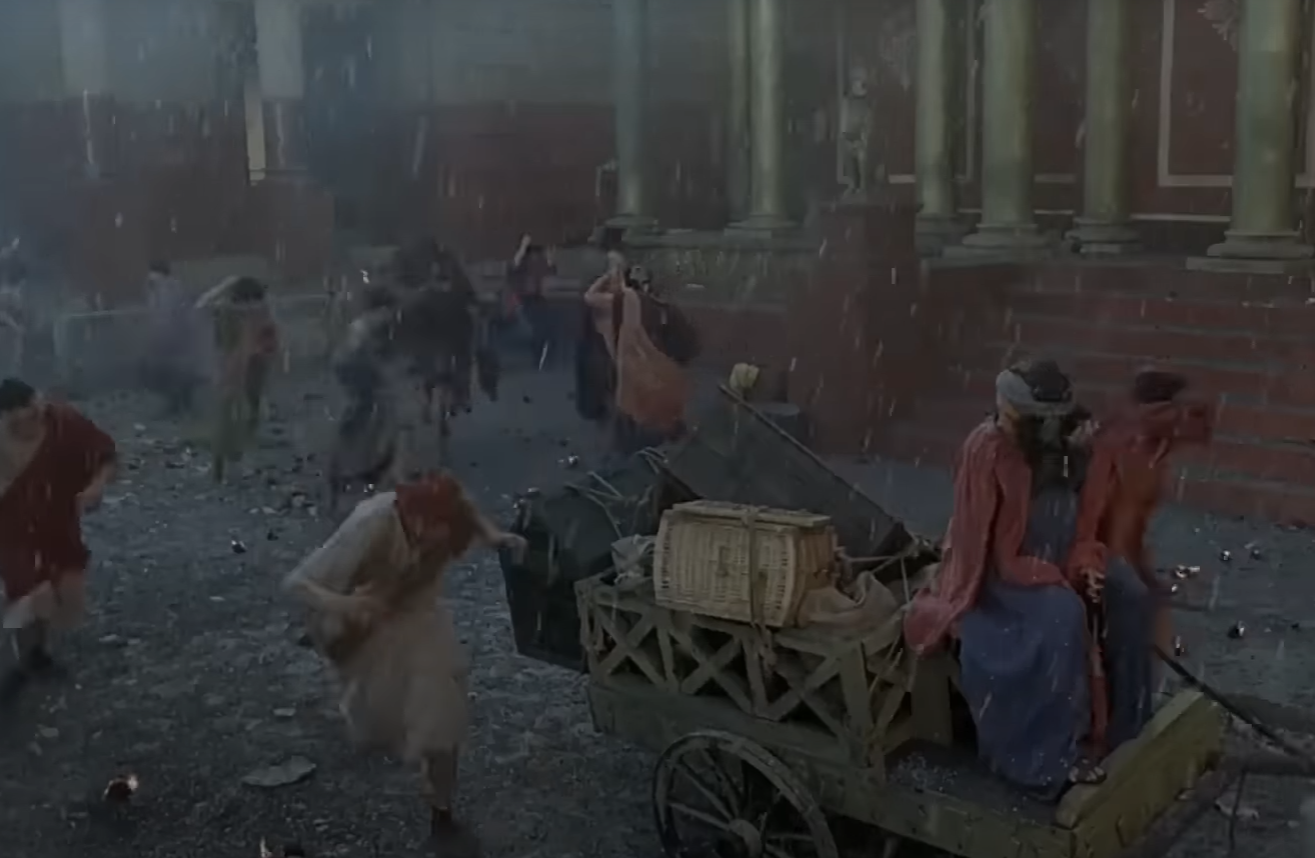 Janus Media, Pompei, ieri, oggi, doman (2007)
Janus Media, Pompei, ieri, oggi, doman (2007)
They Left Their Mark
When modern archaeologists returned to Pompeii centuries later, the tunnels left behind by looters were clearly visible. They carried off everything that they could—but they quickly learned that excavating Pompeii was far beyond their means. That would come much, much later.
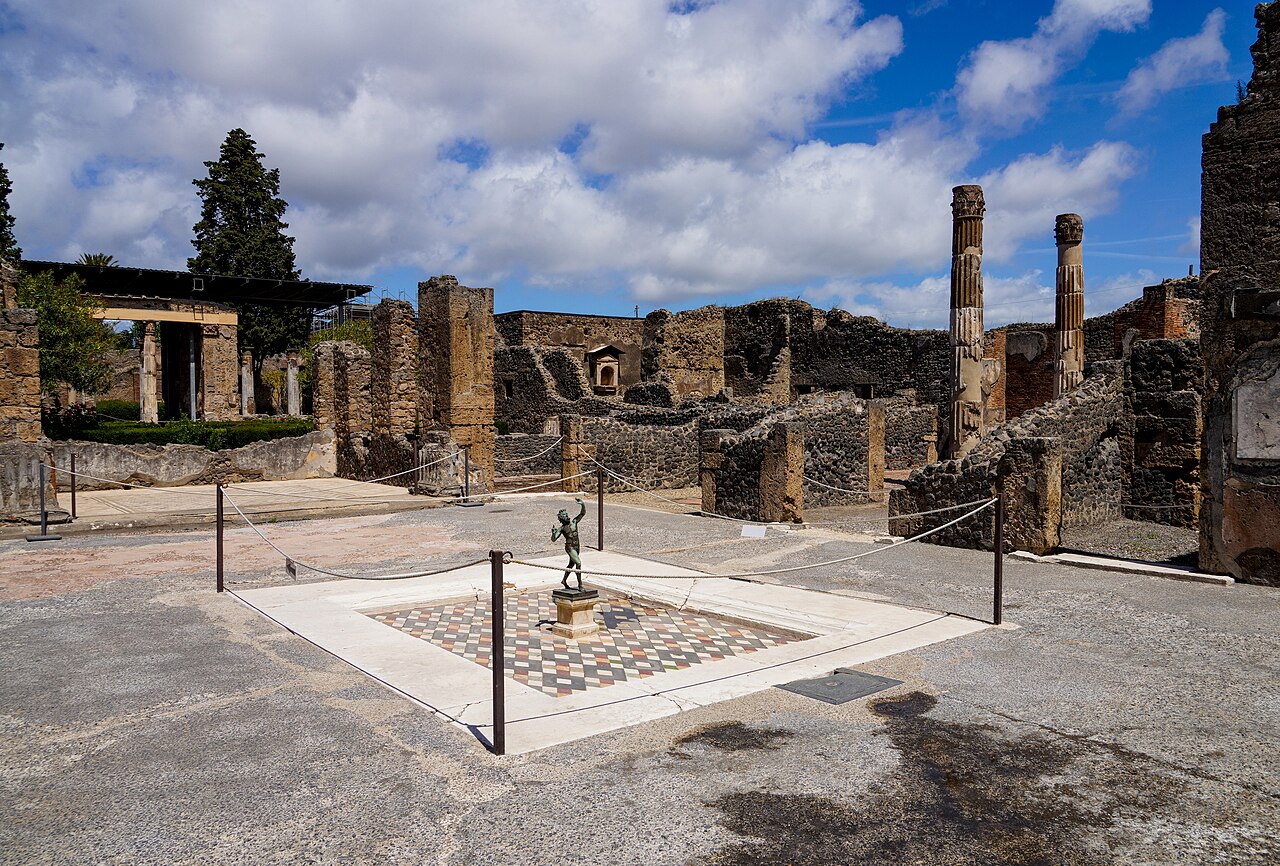 NikonZ7II, CC BY-SA 4.0, Wikimedia Commons
NikonZ7II, CC BY-SA 4.0, Wikimedia Commons

